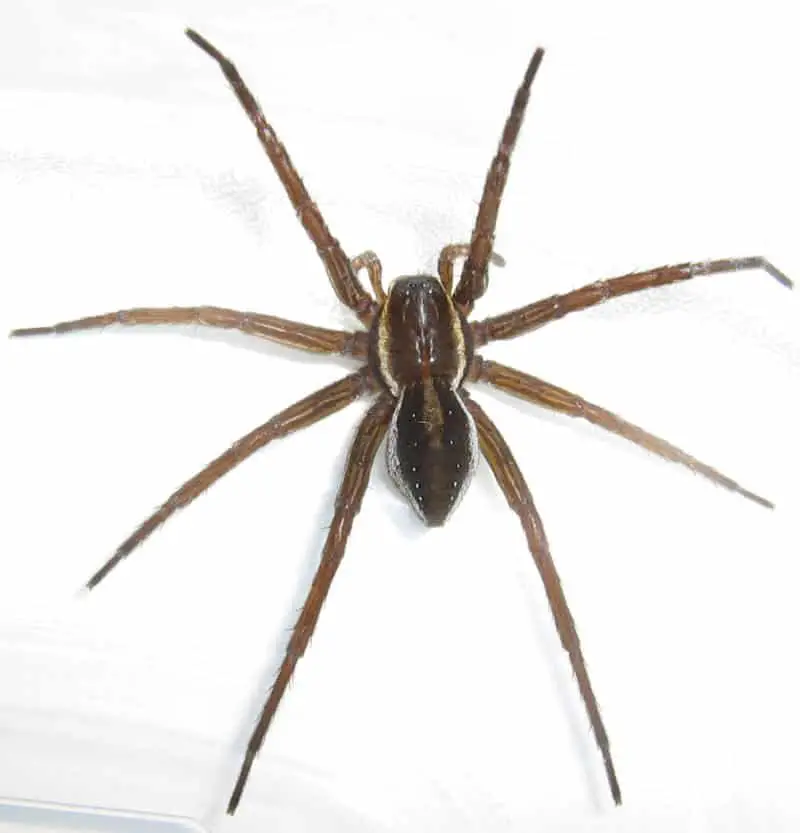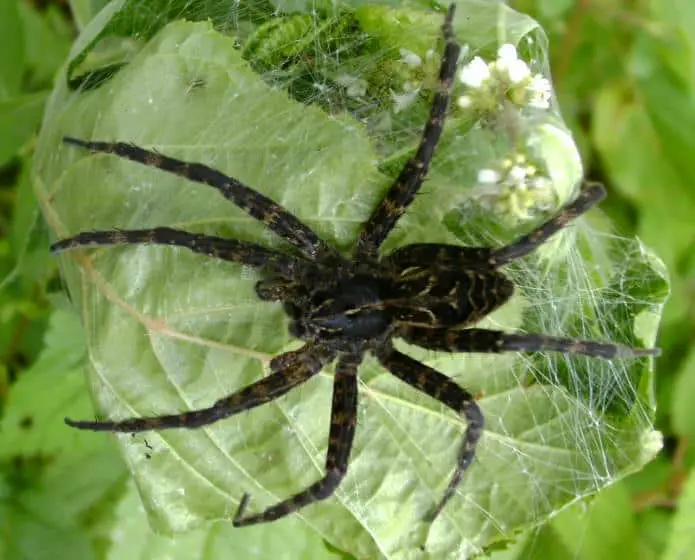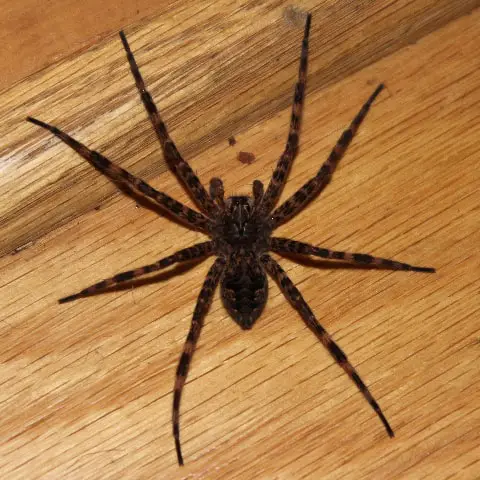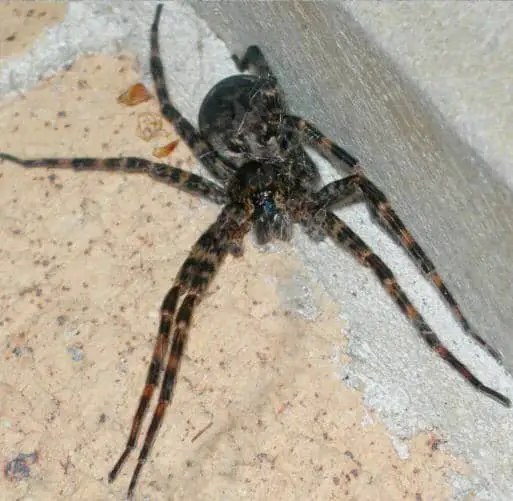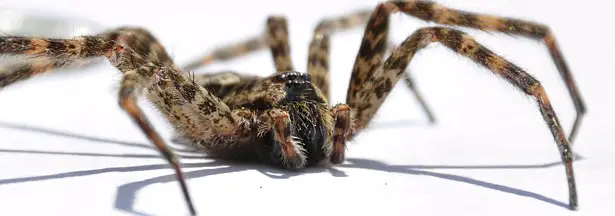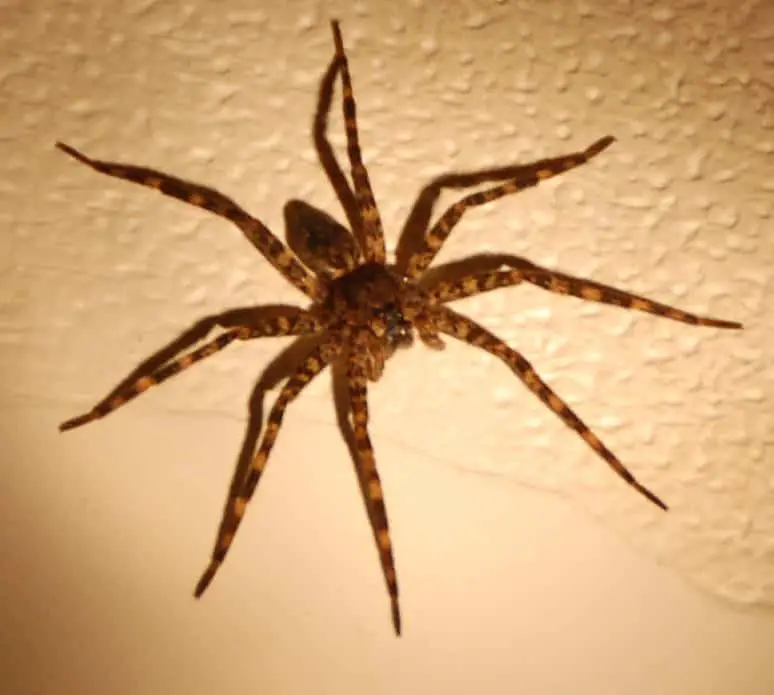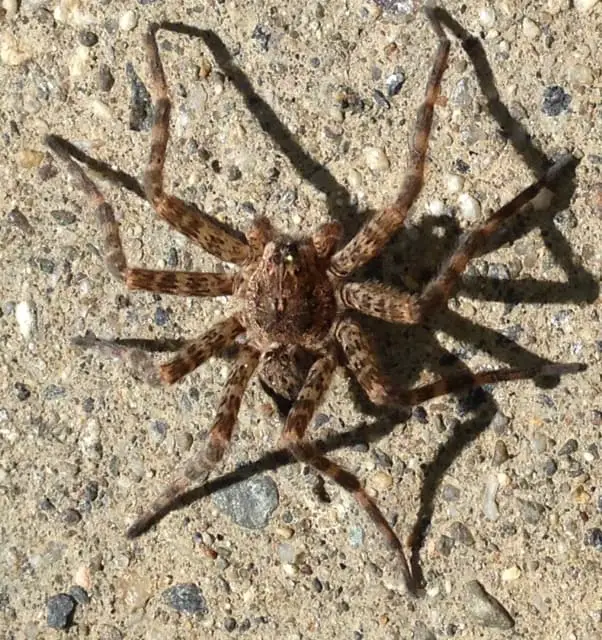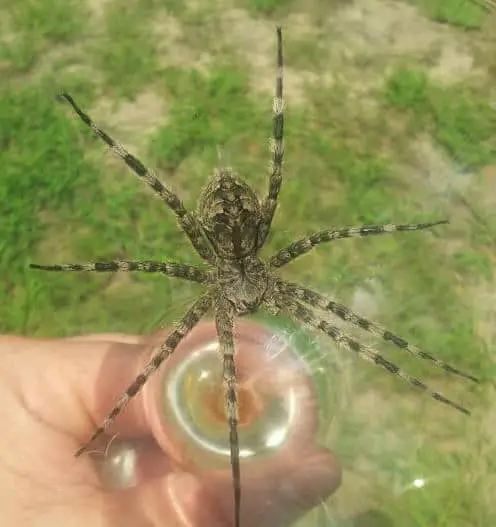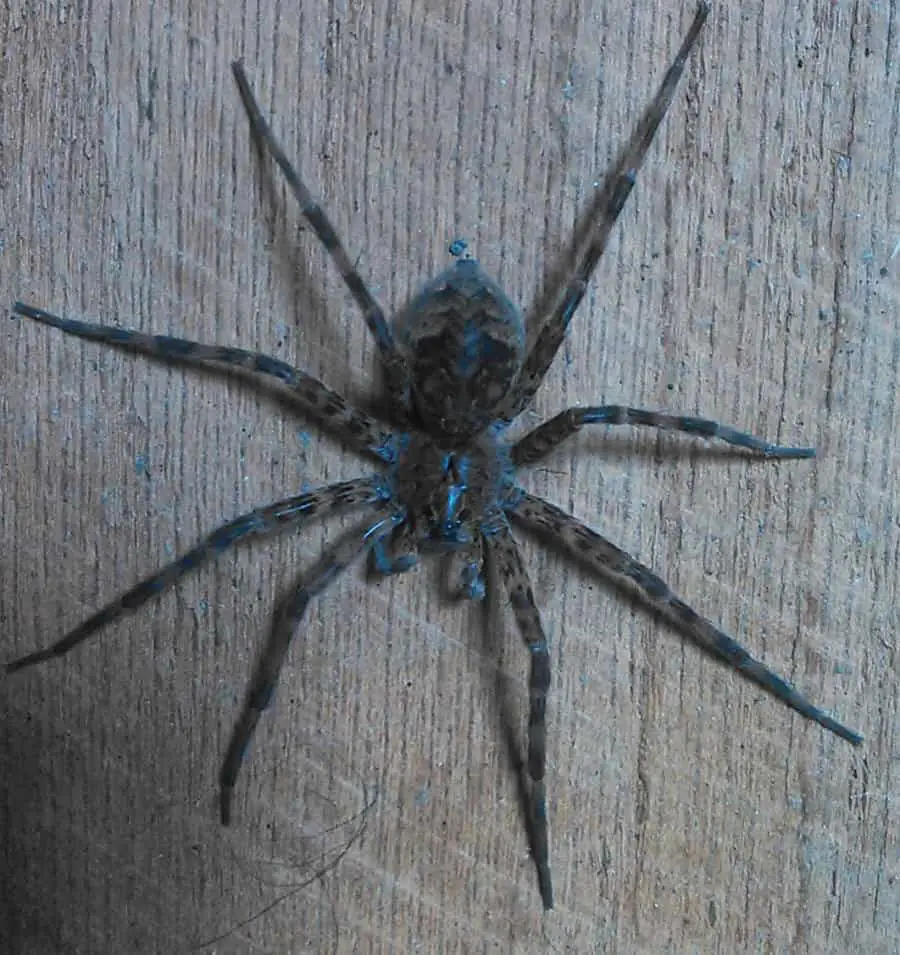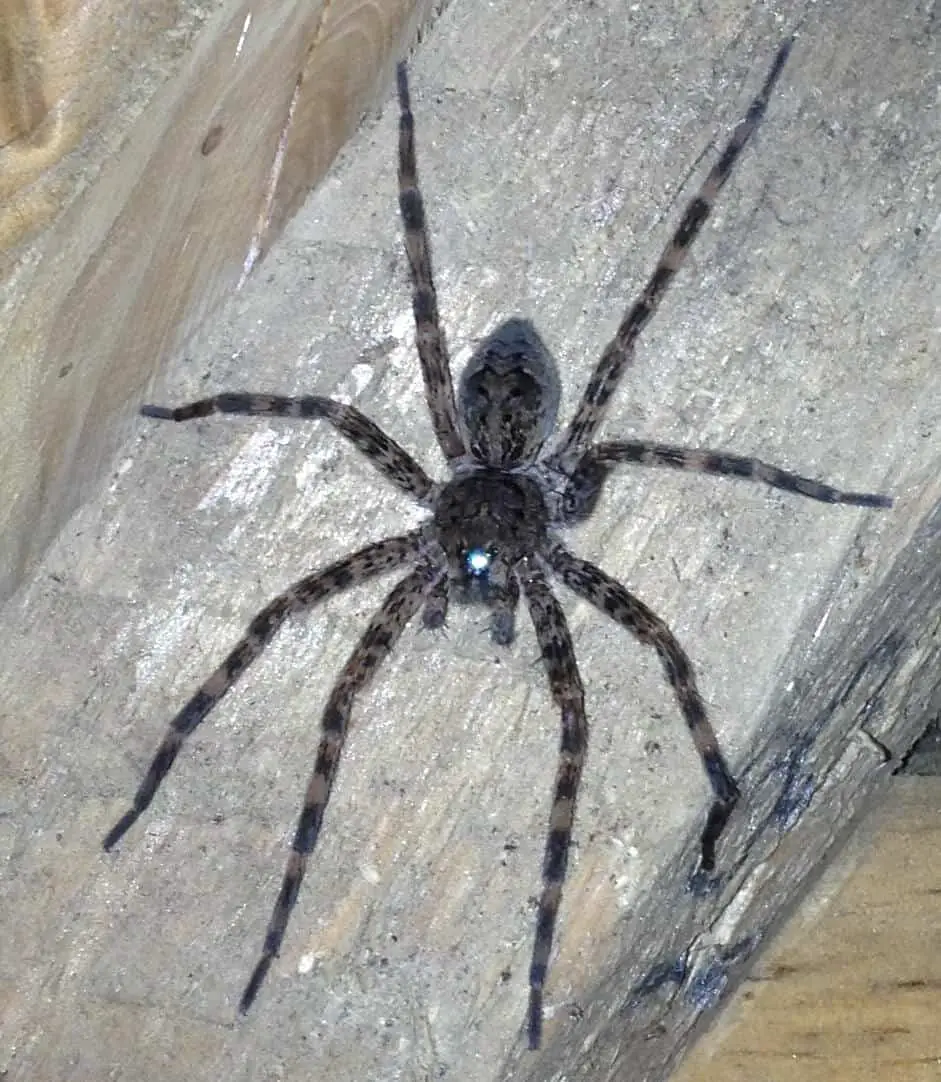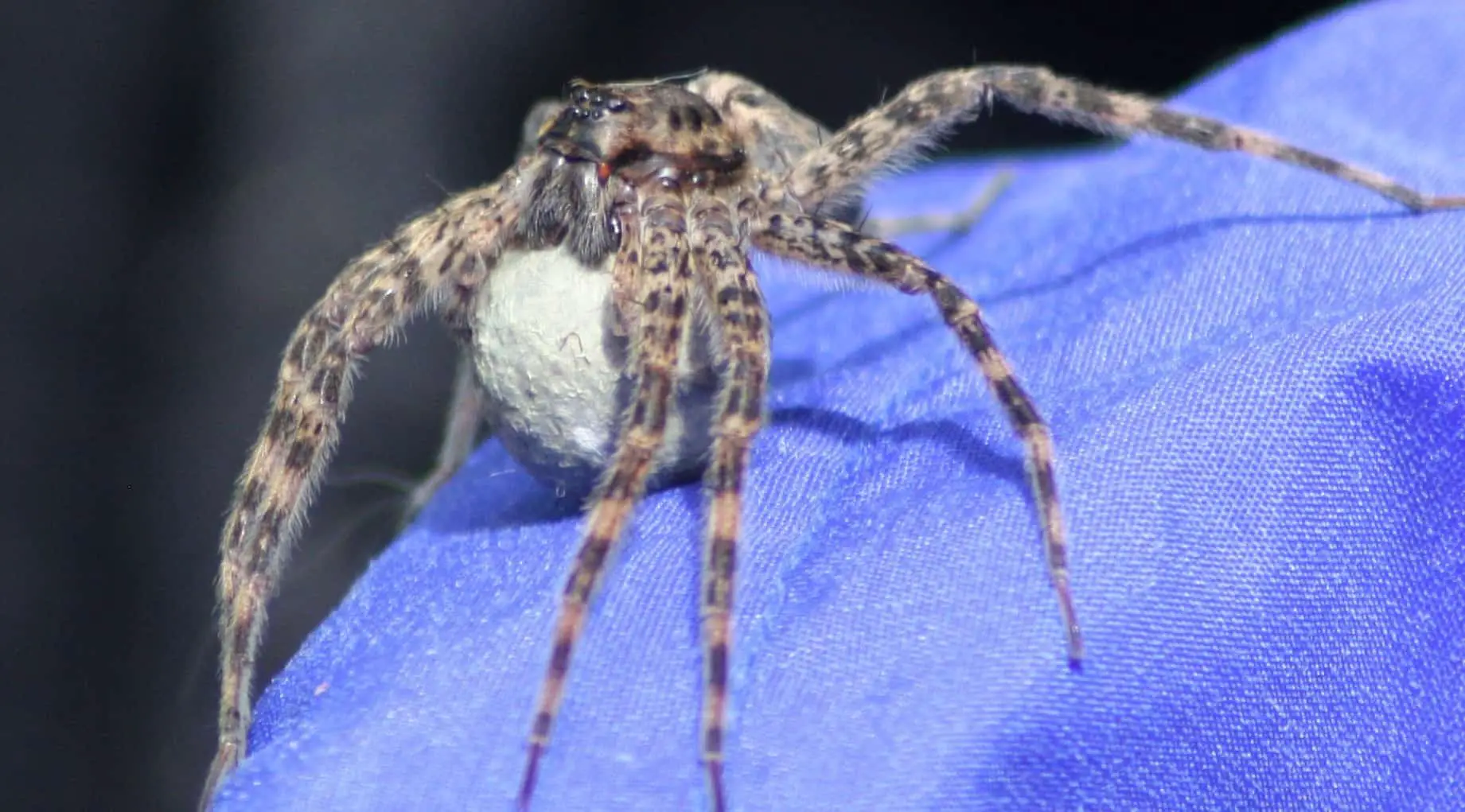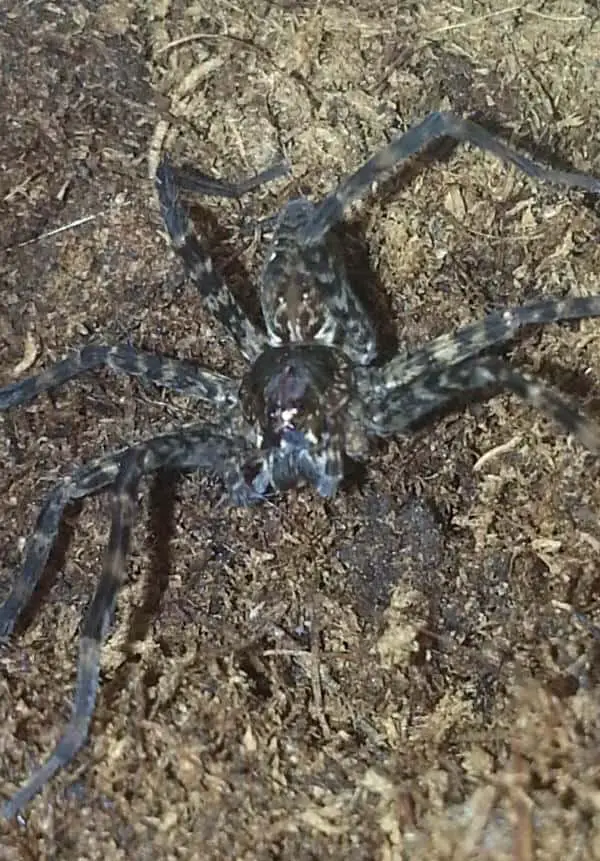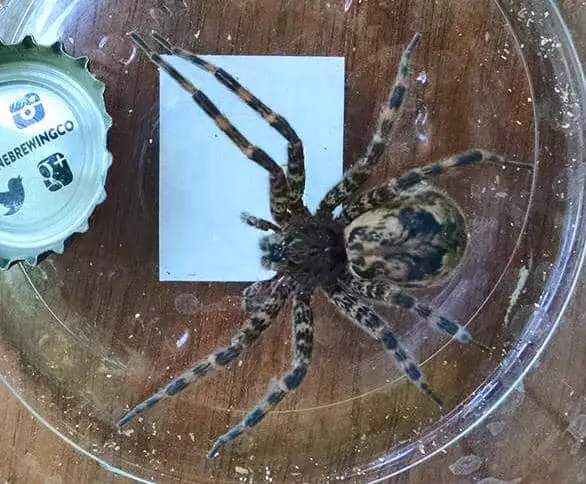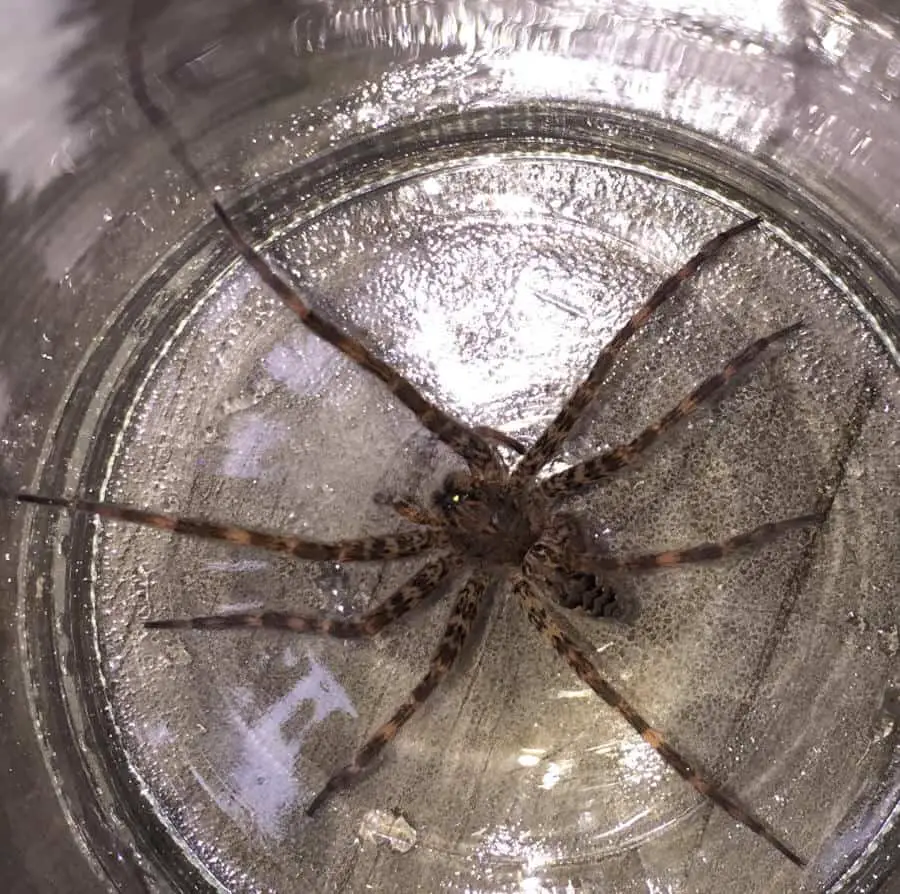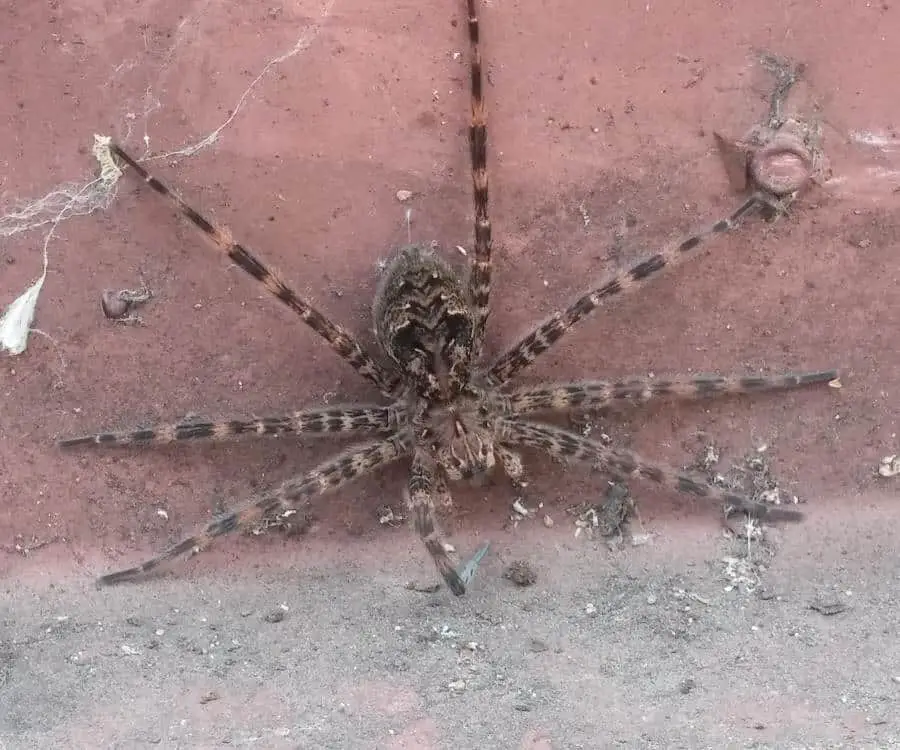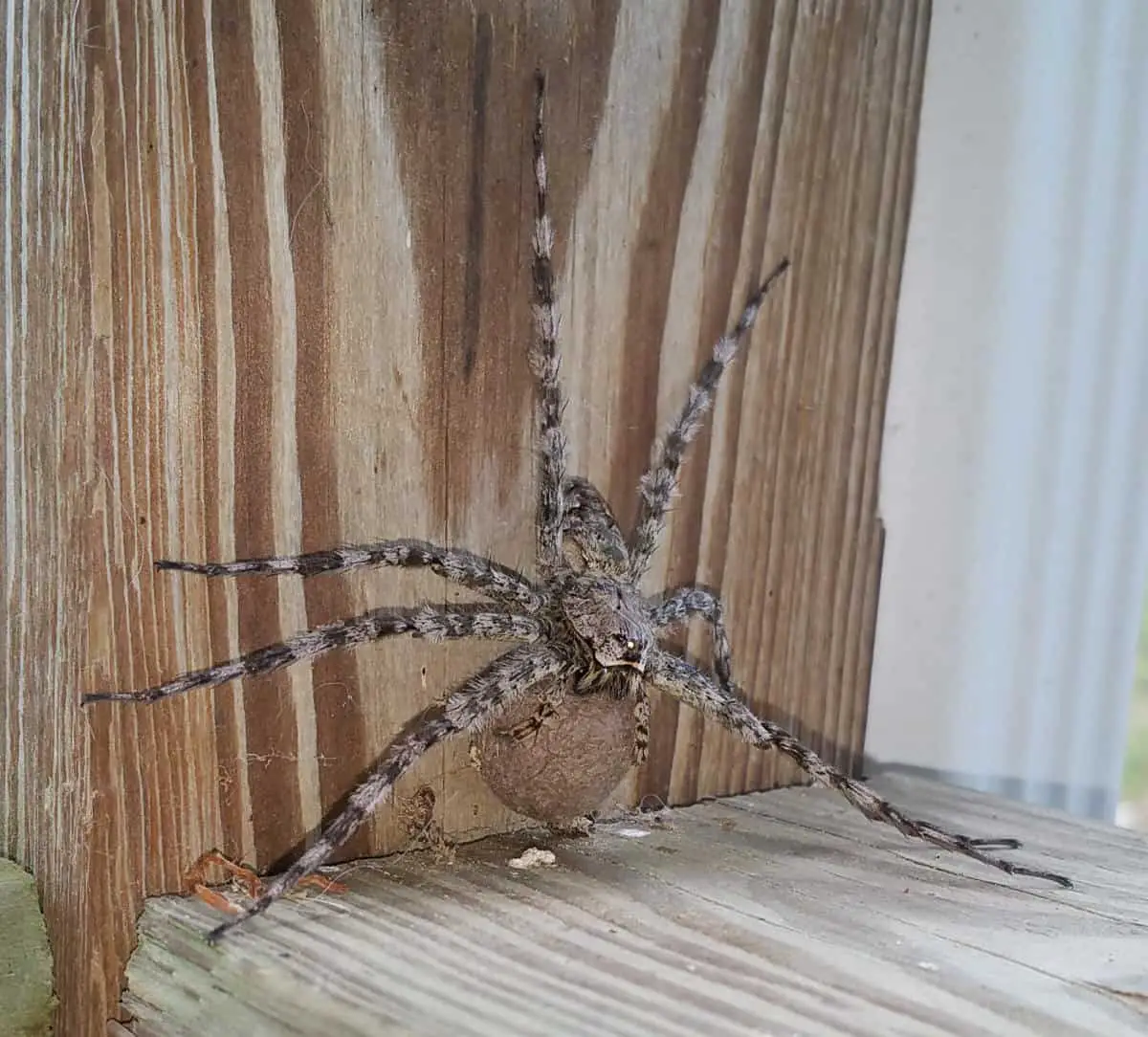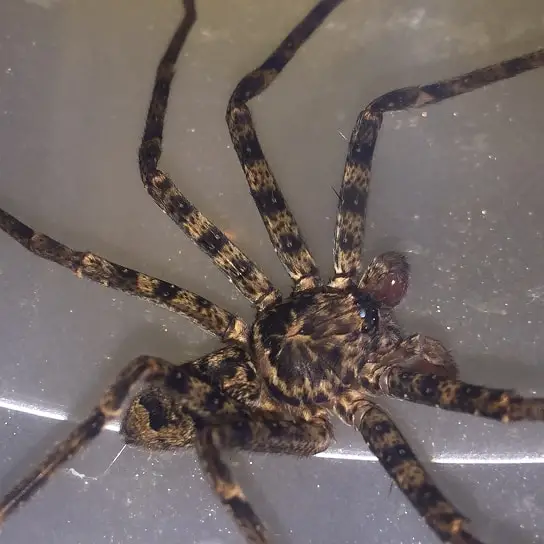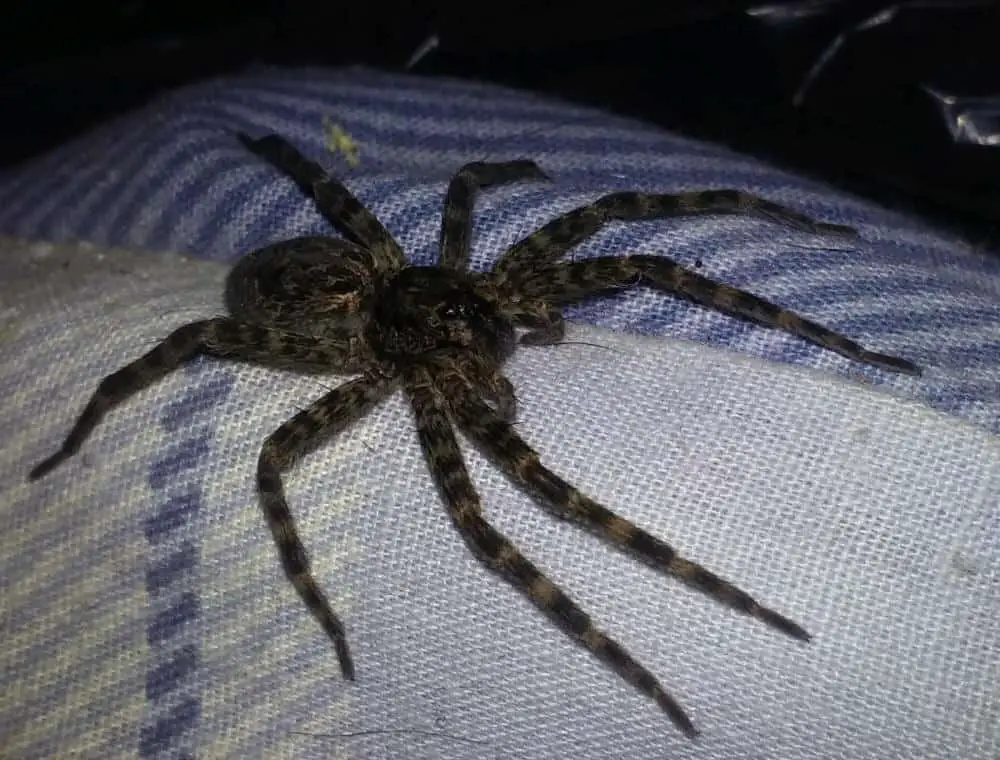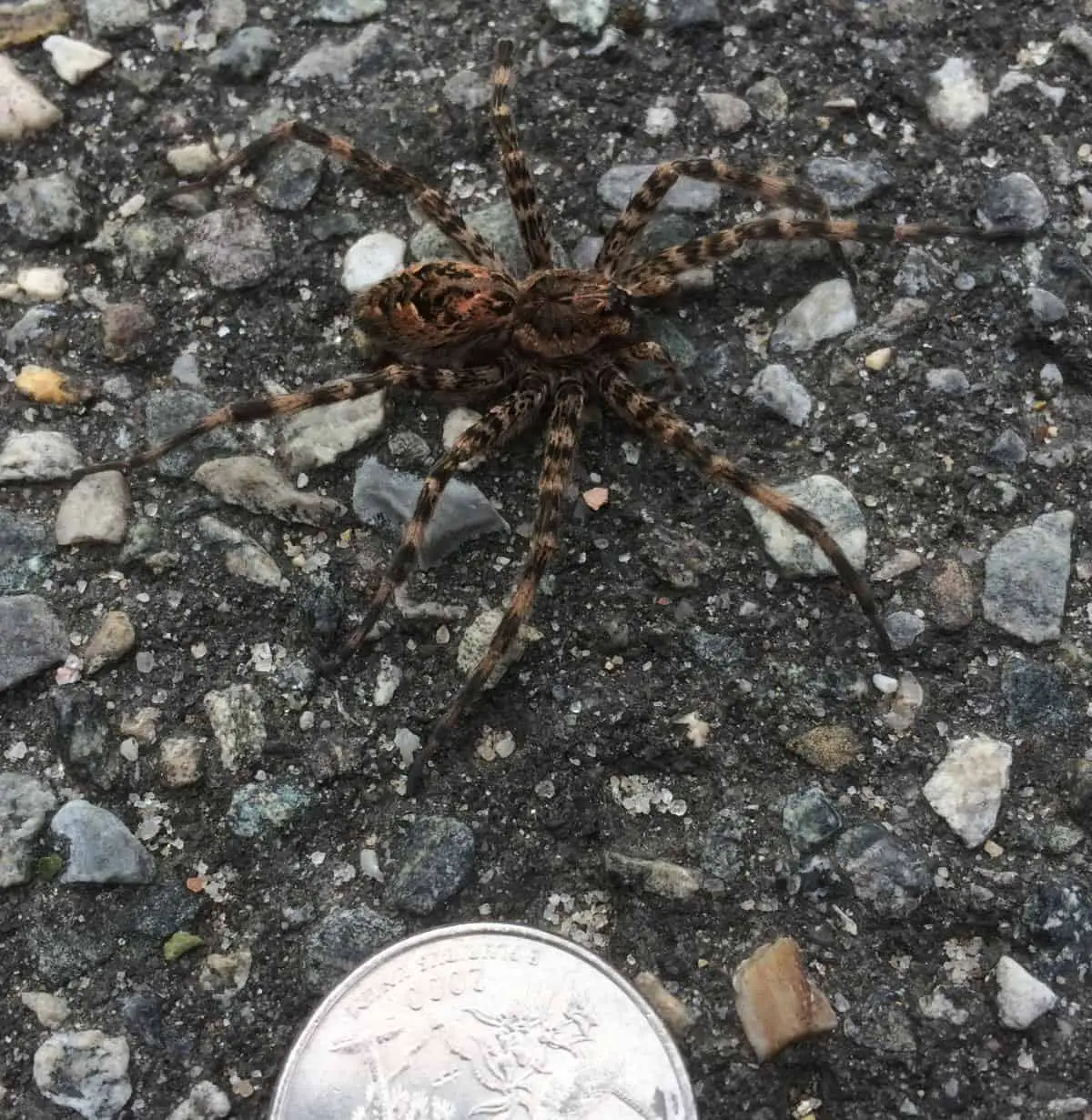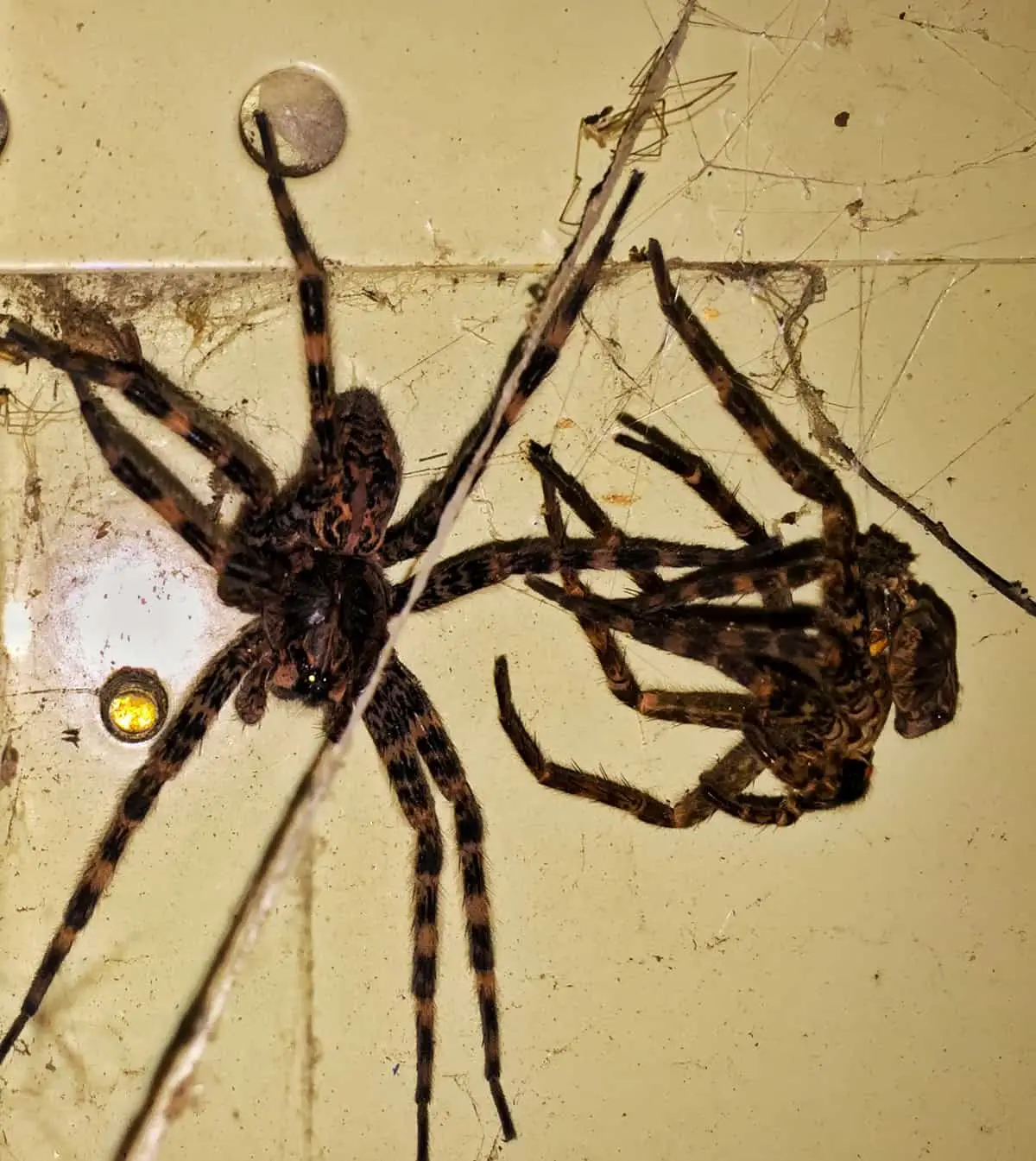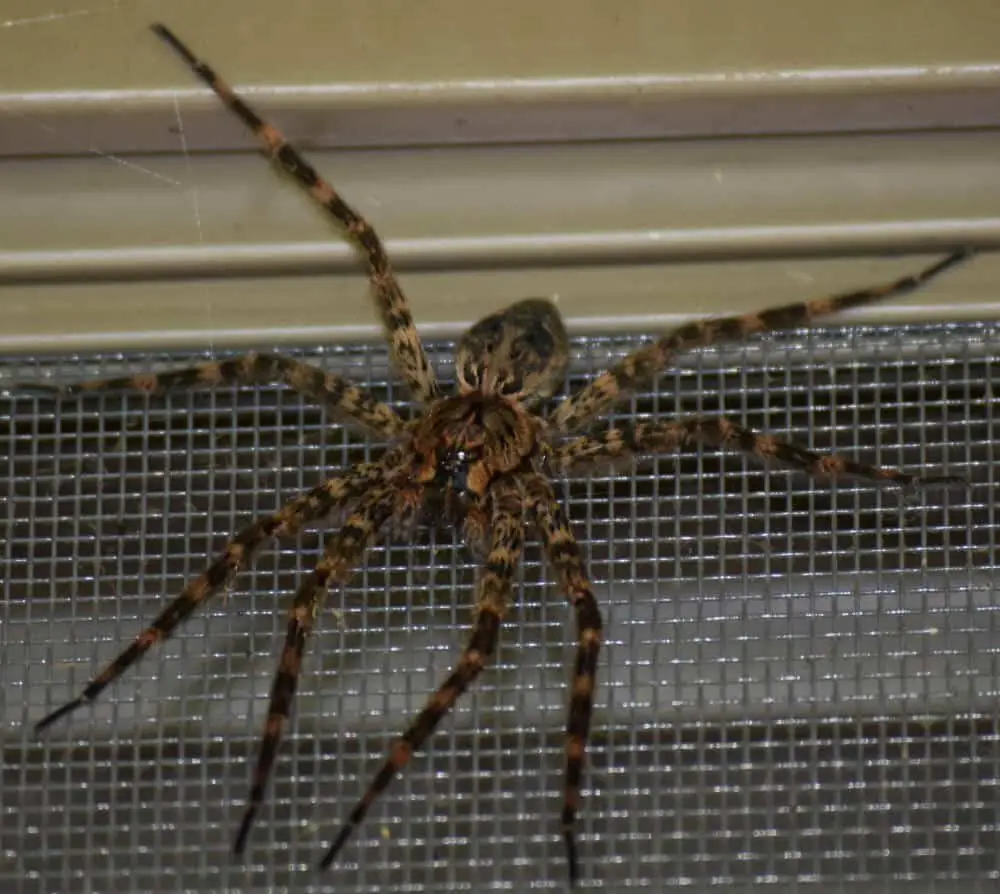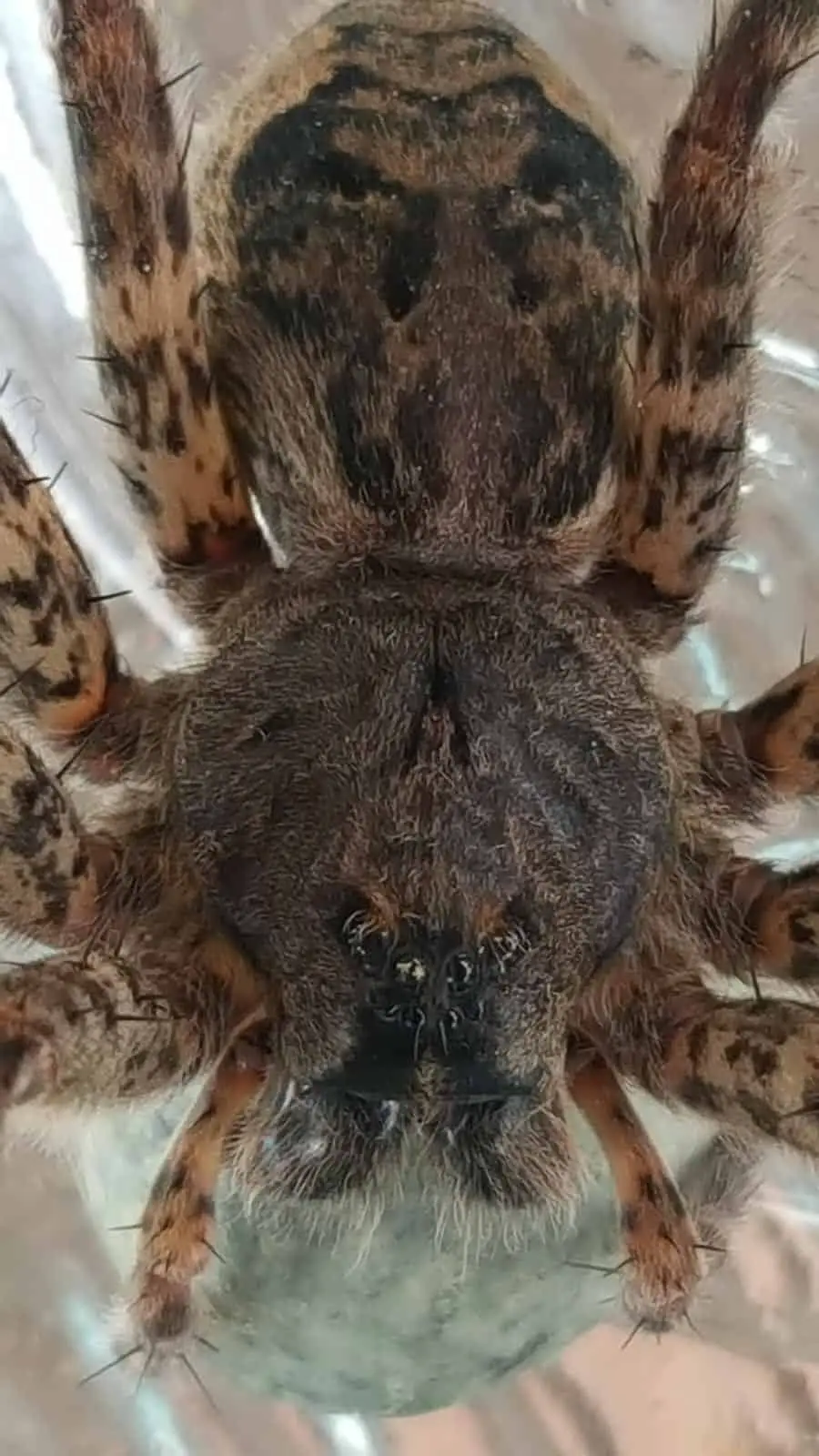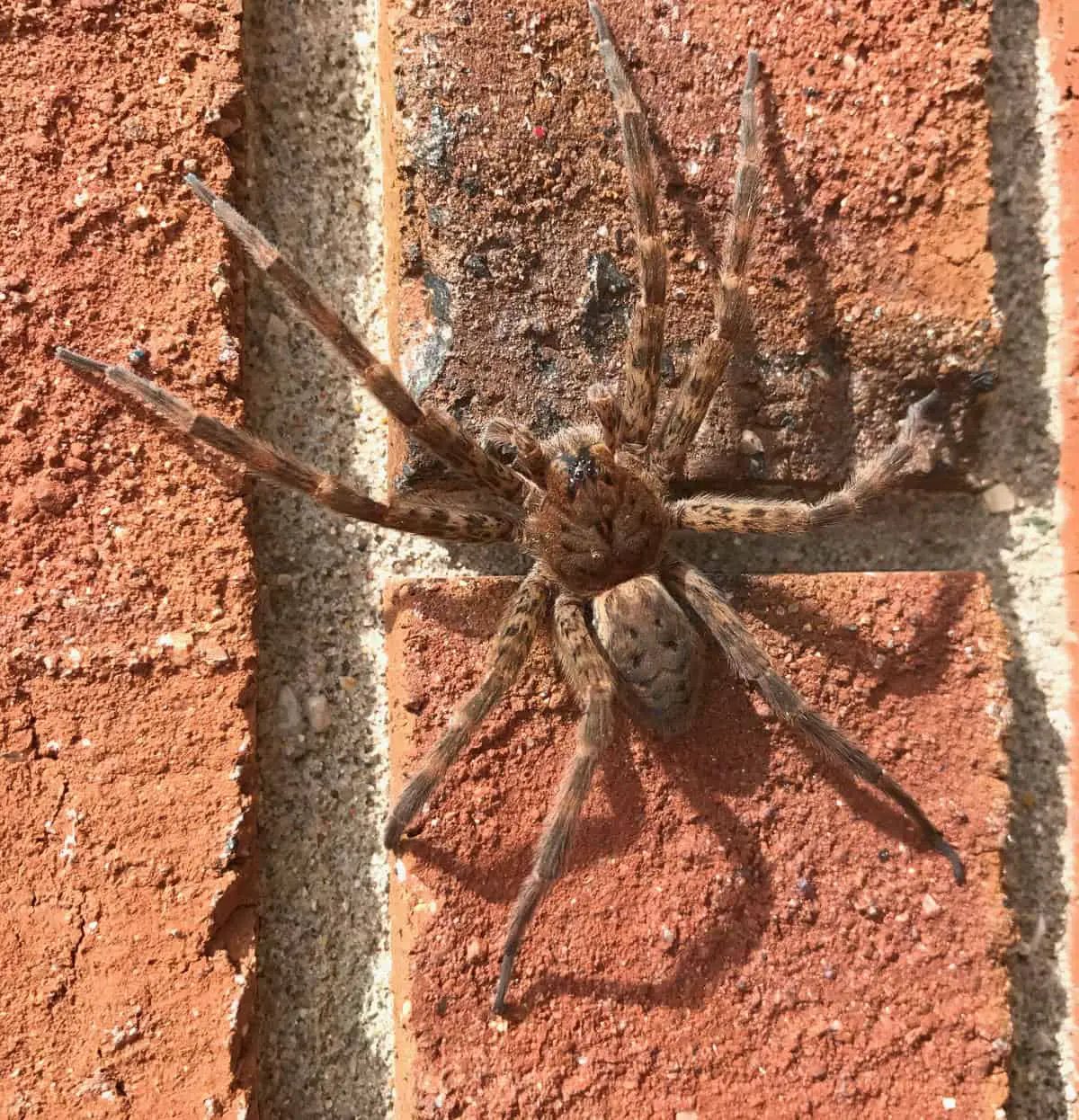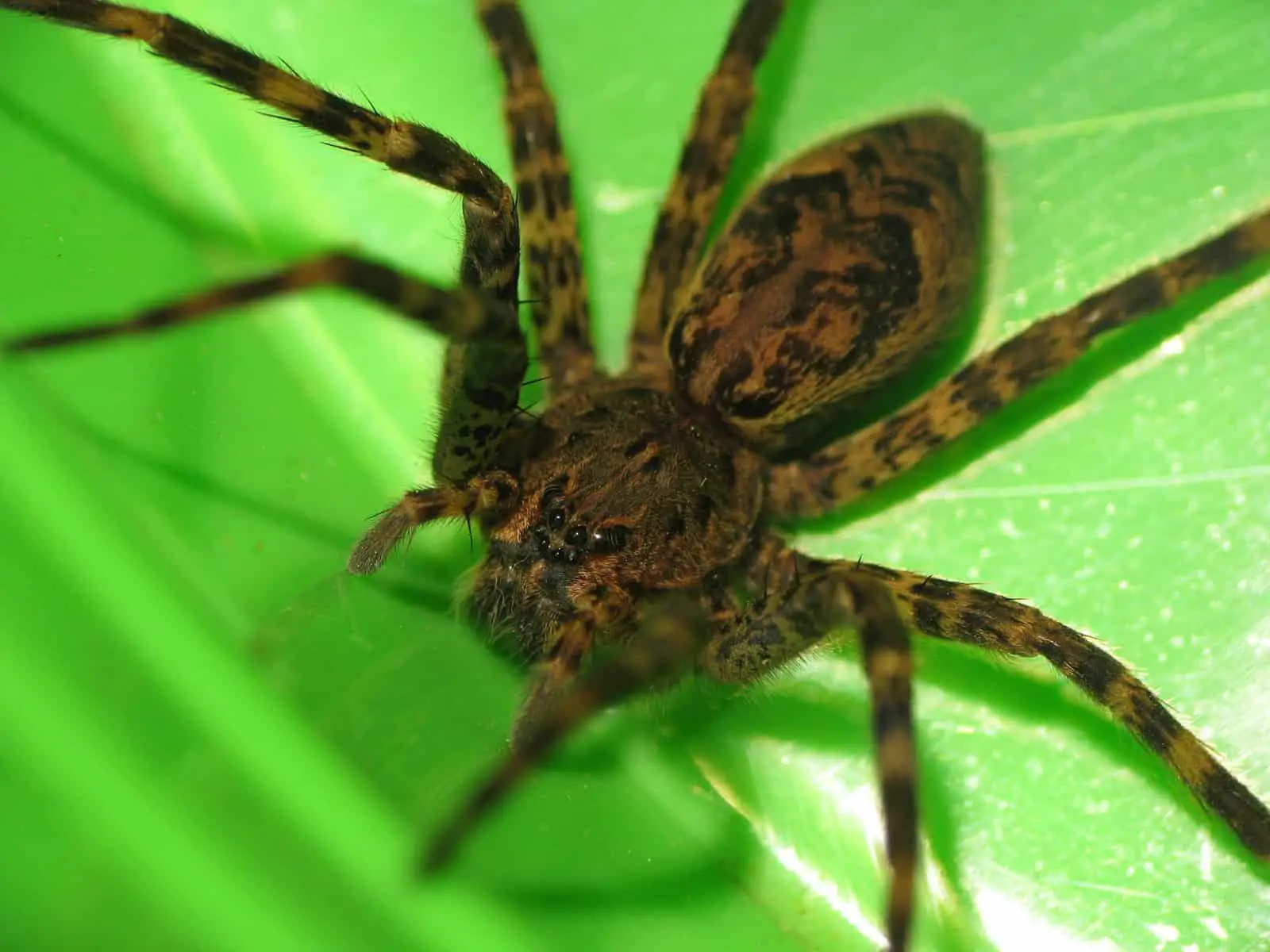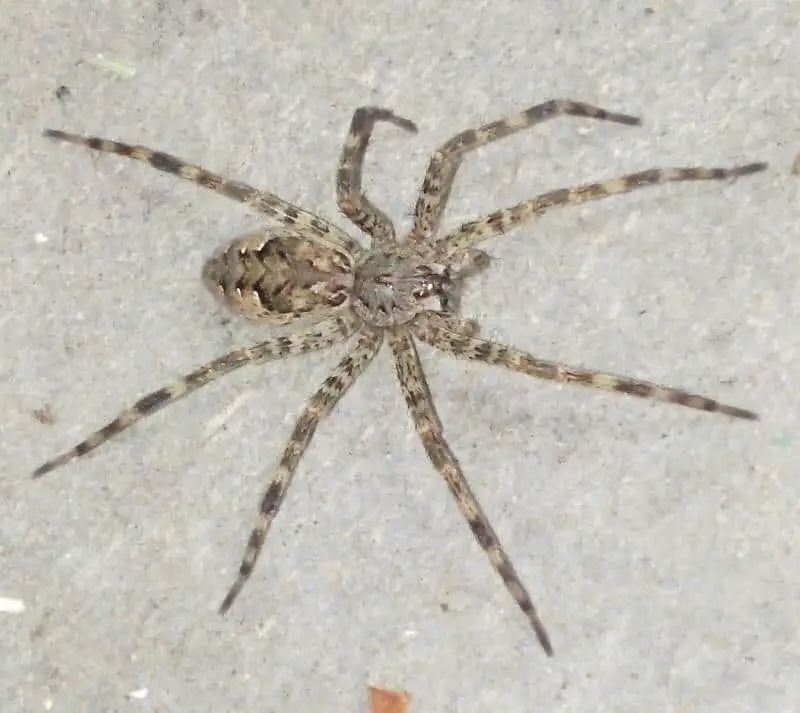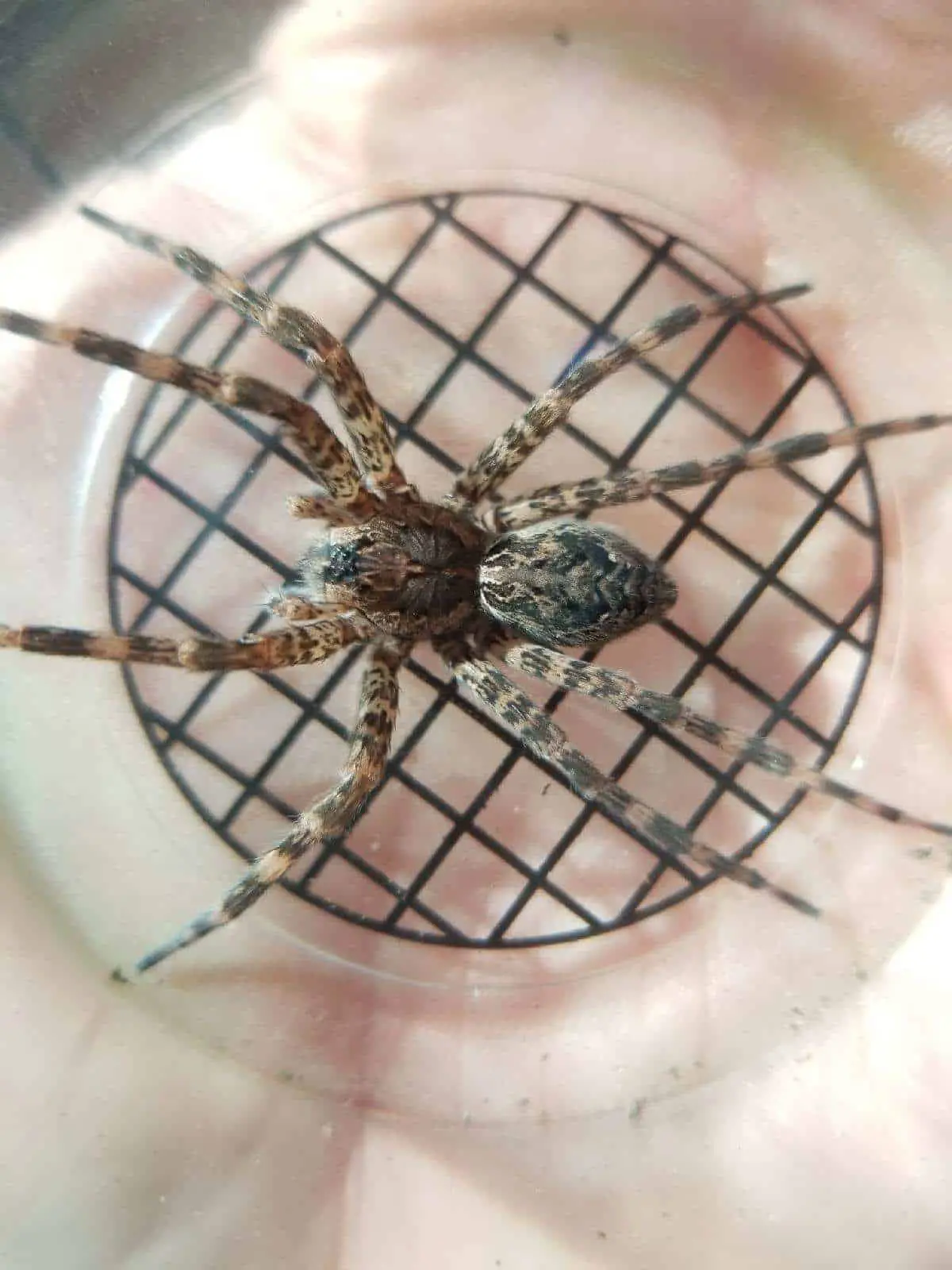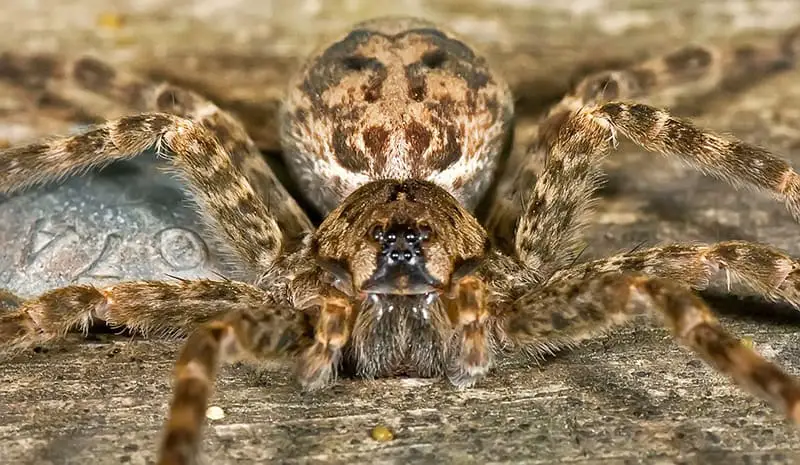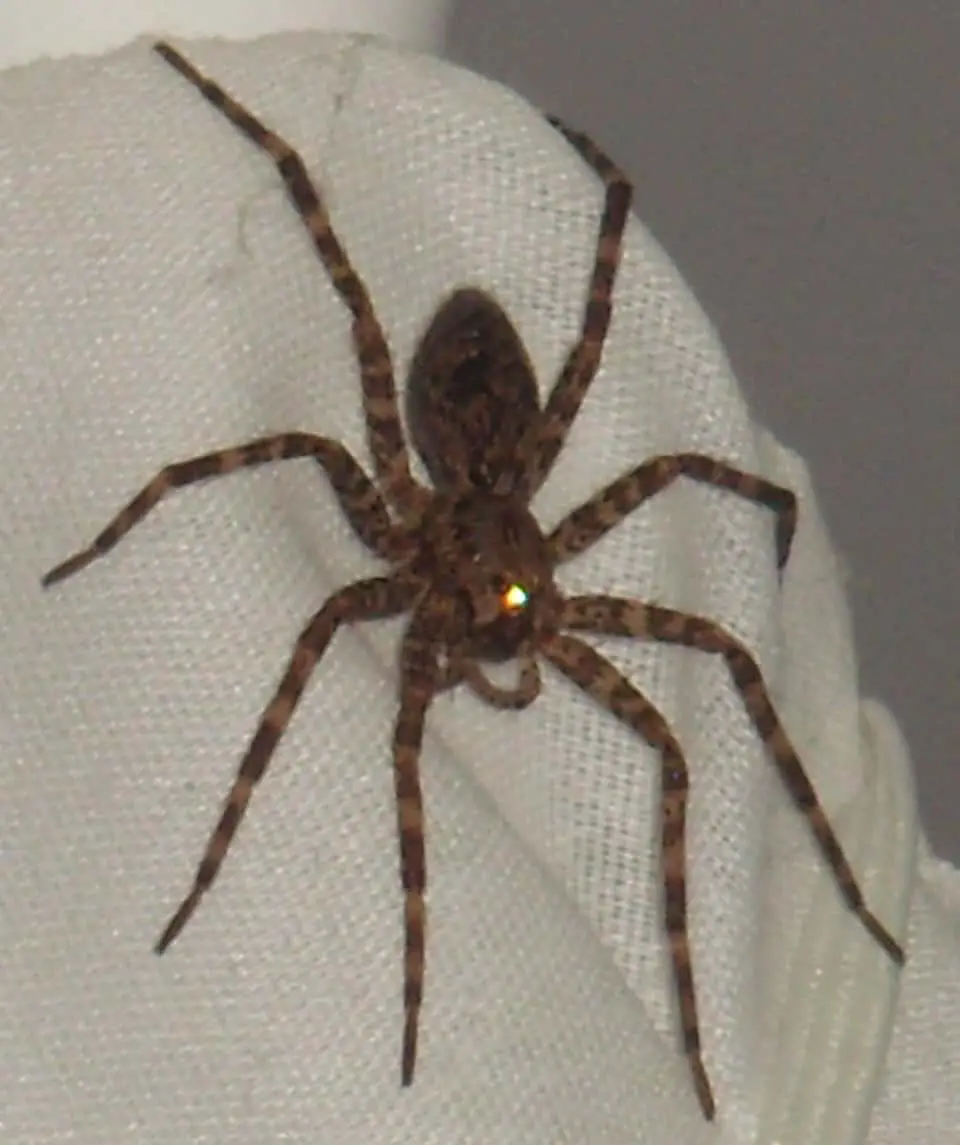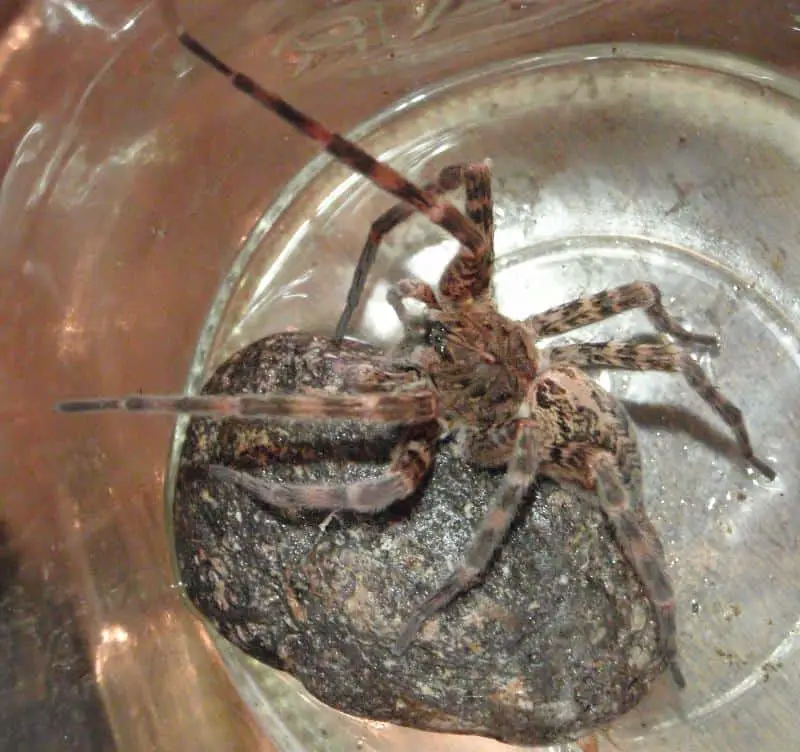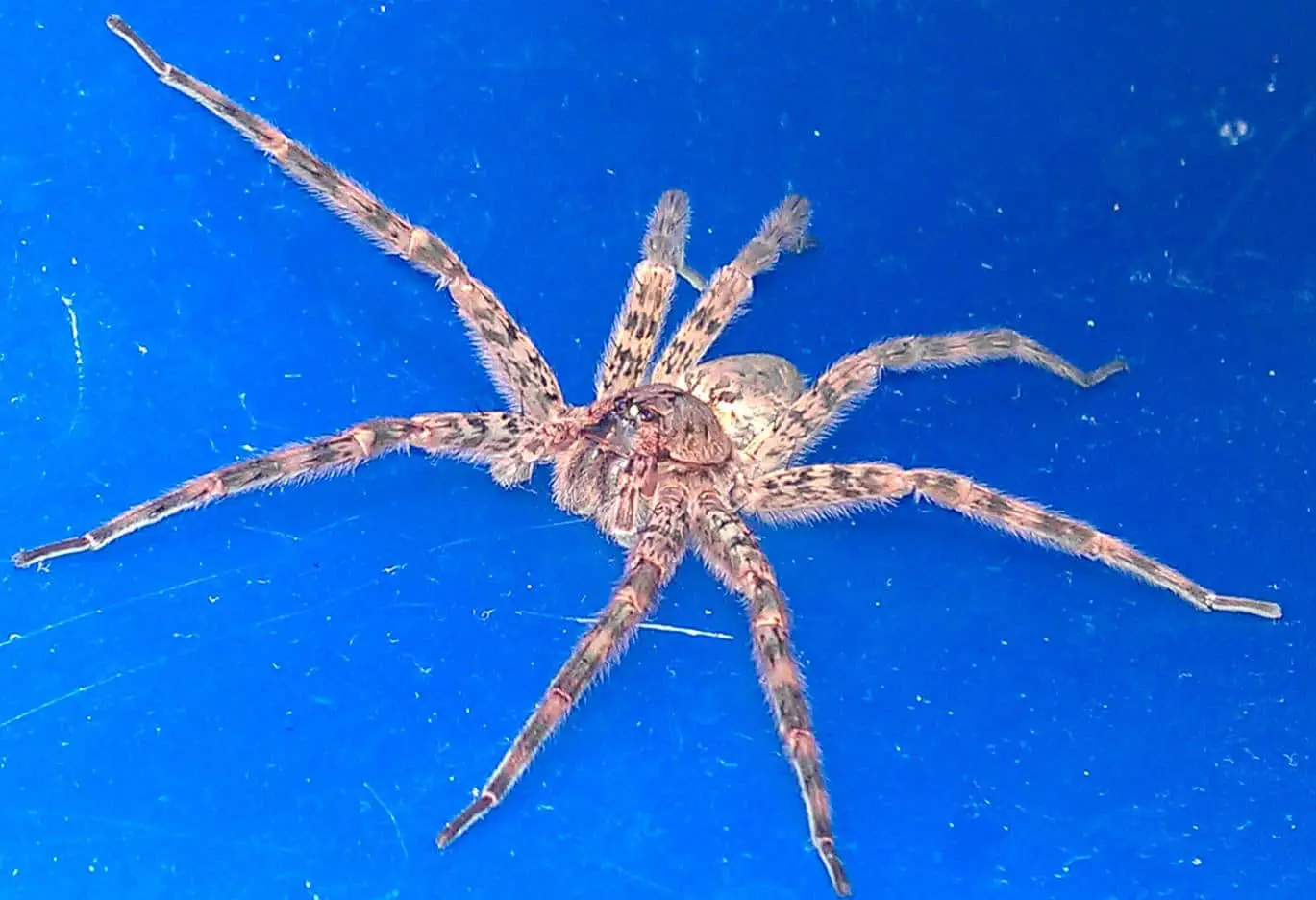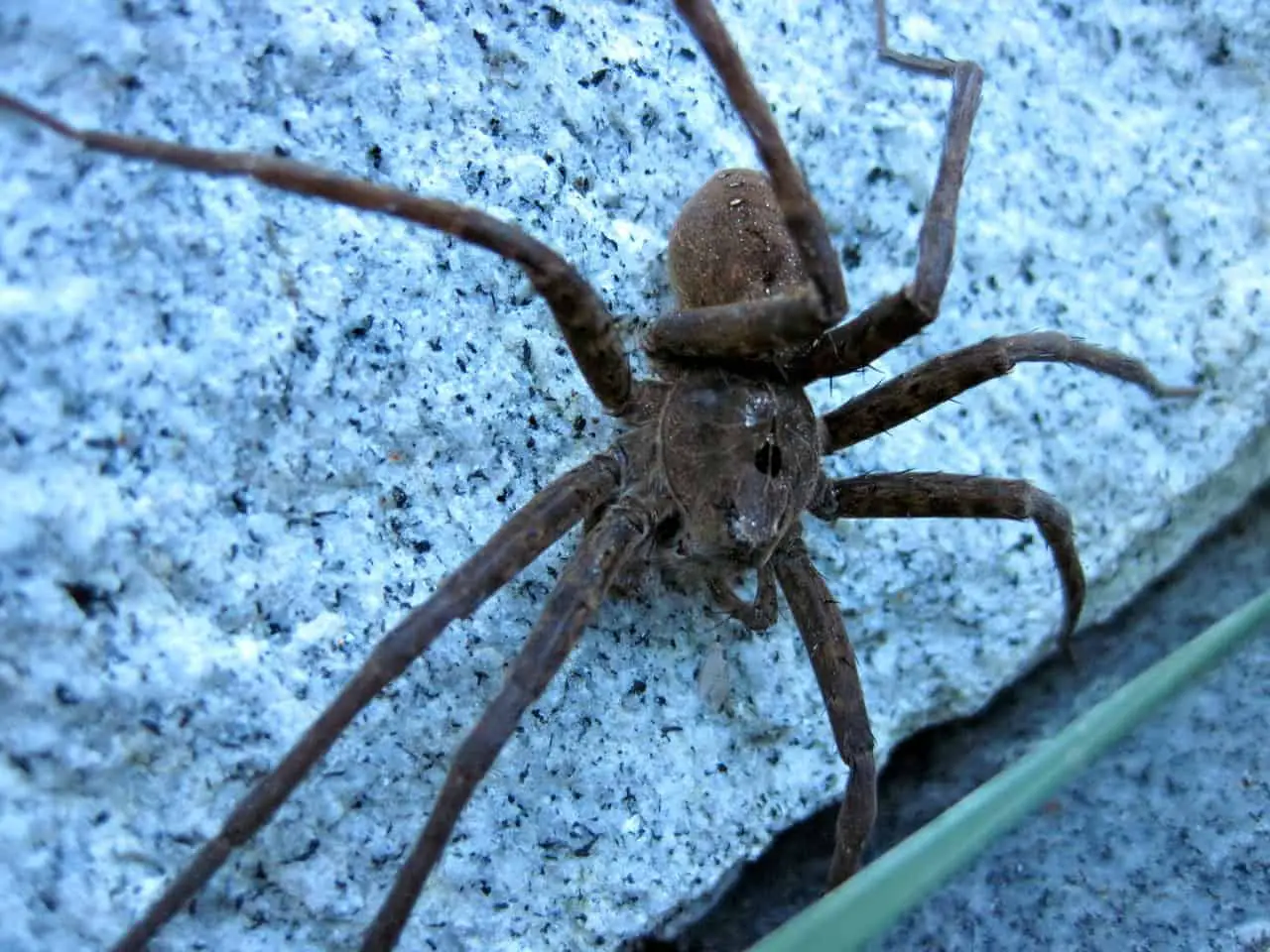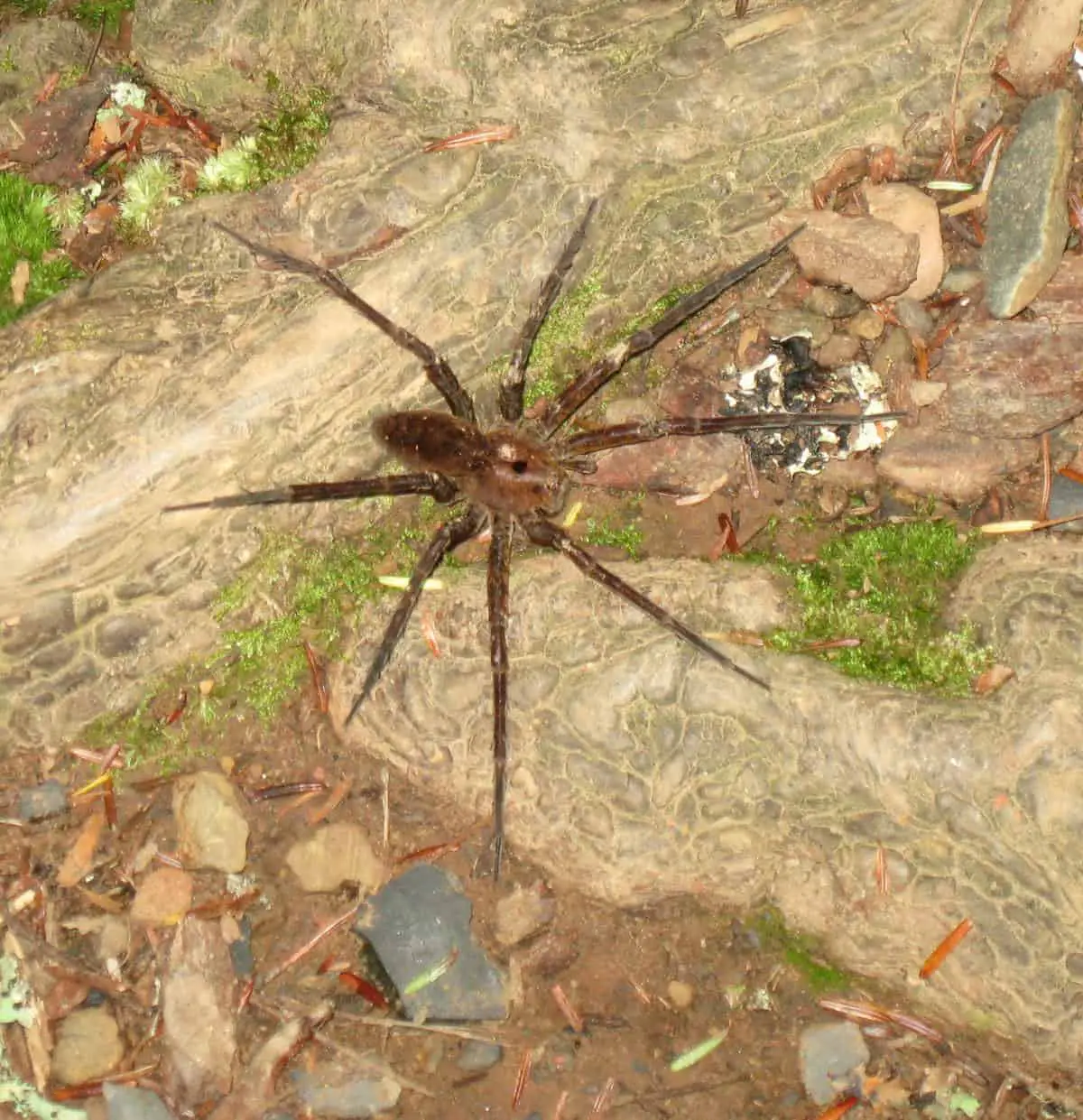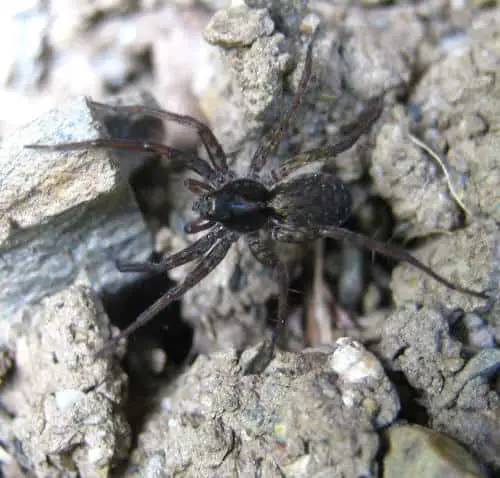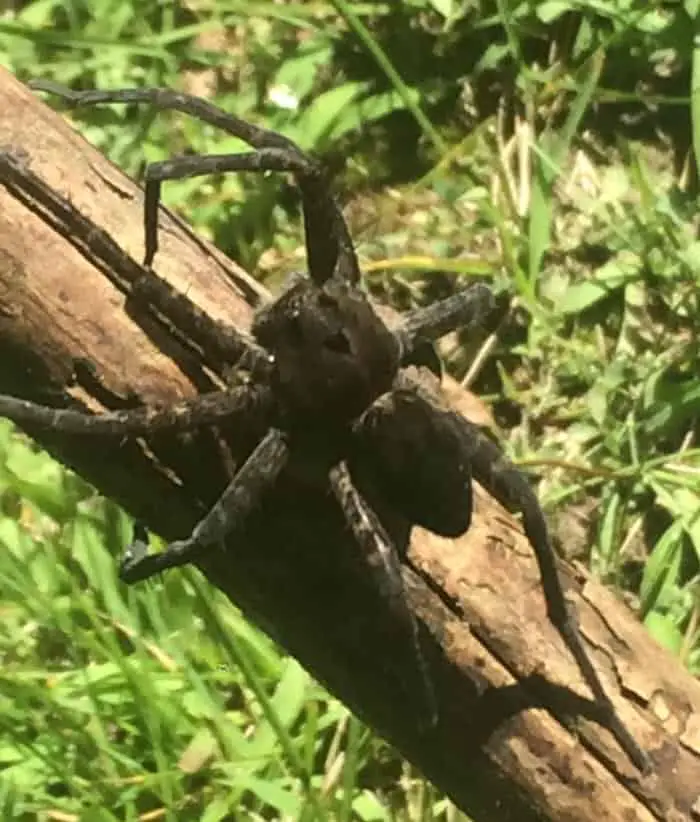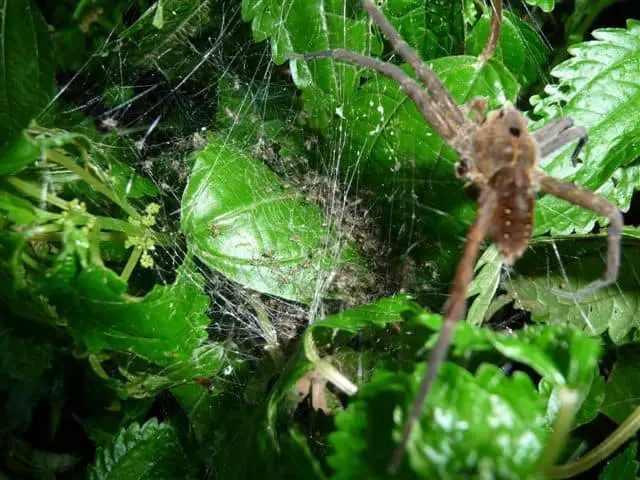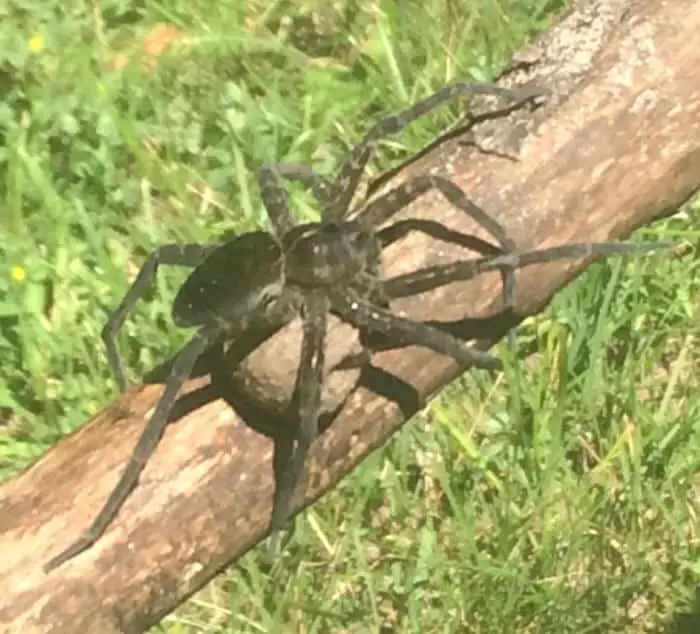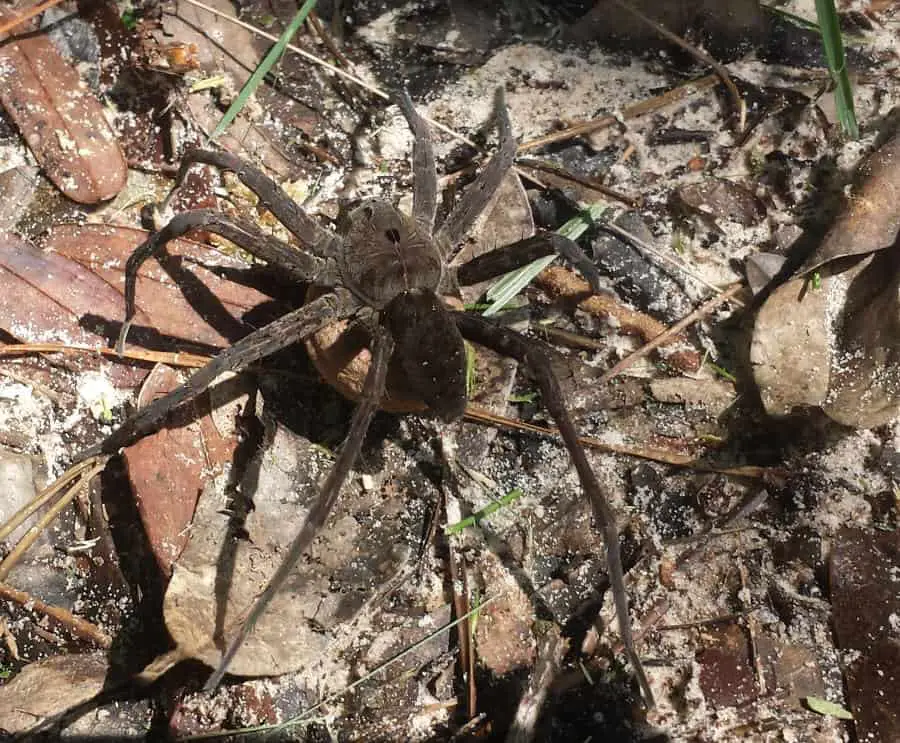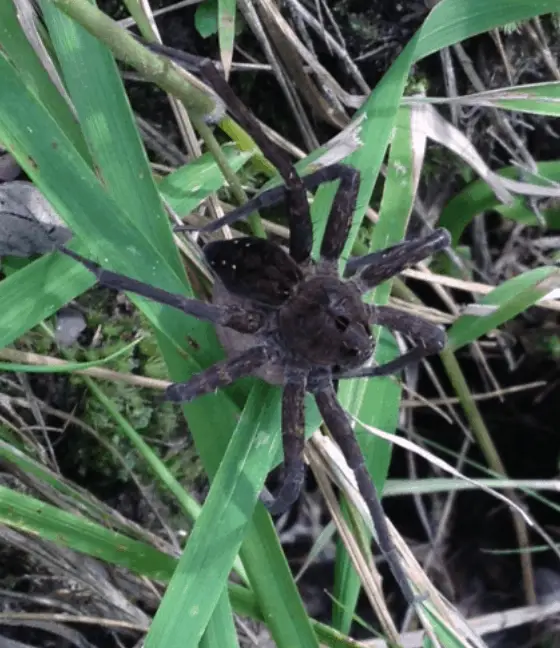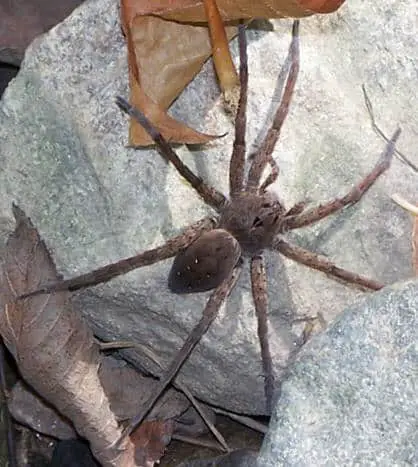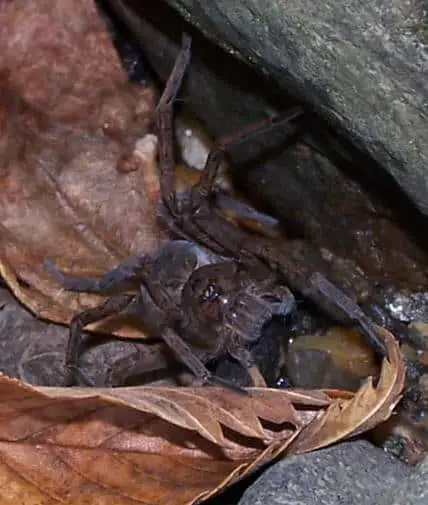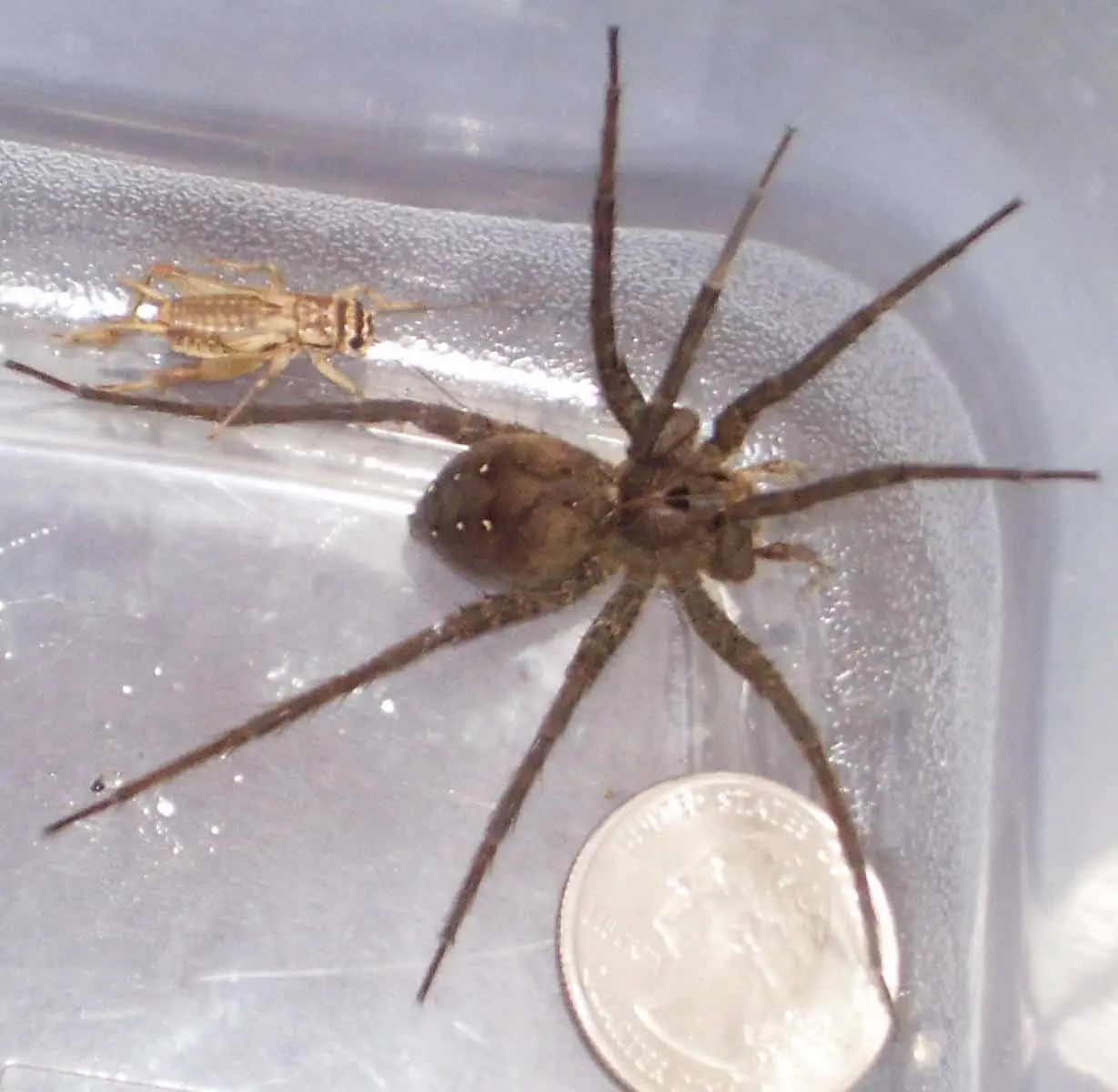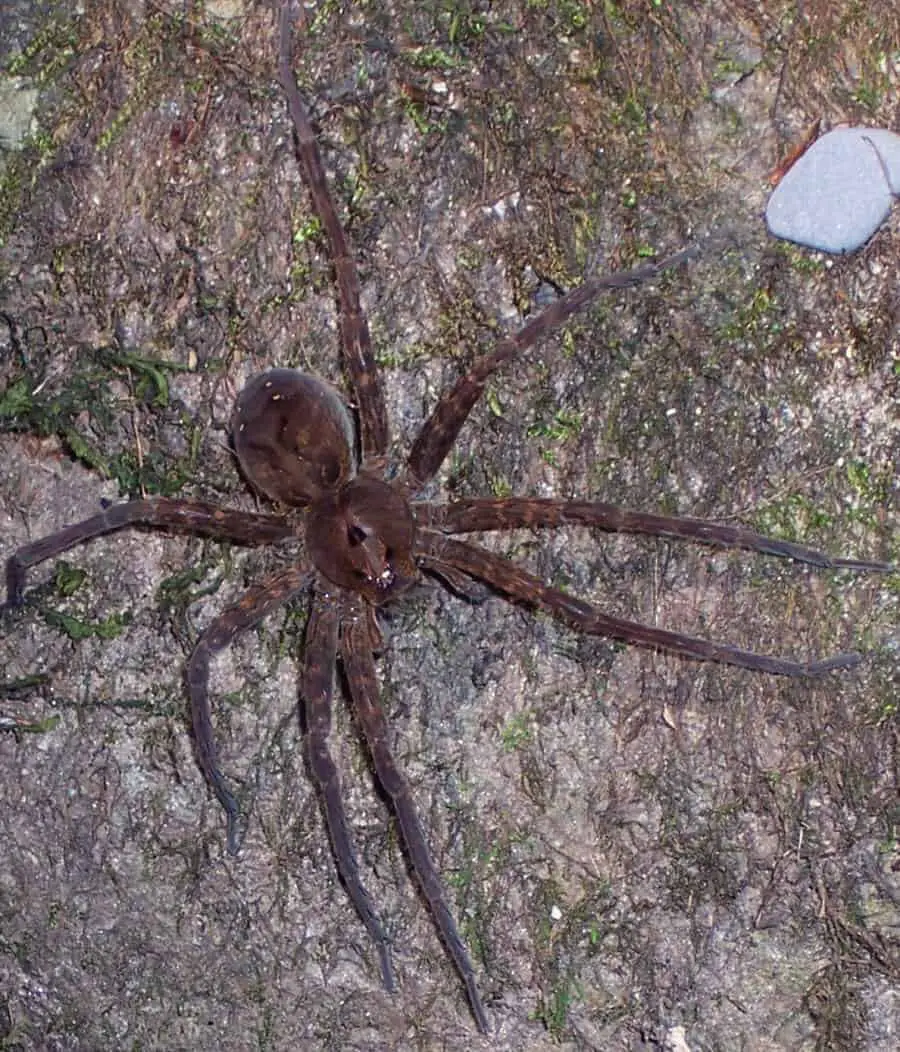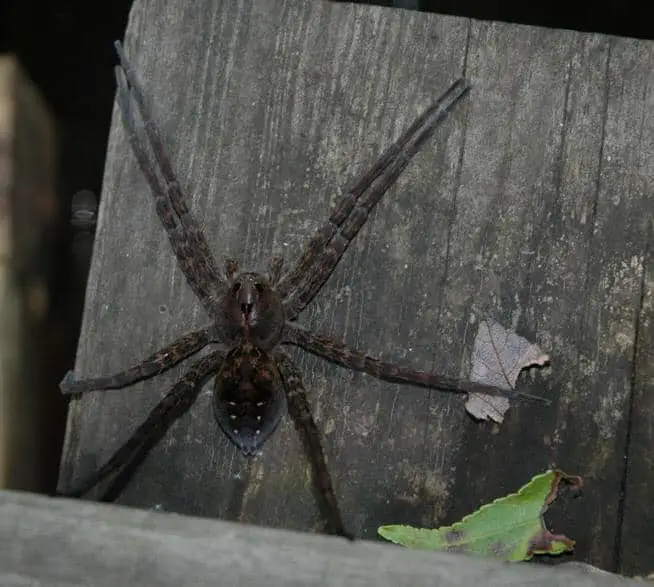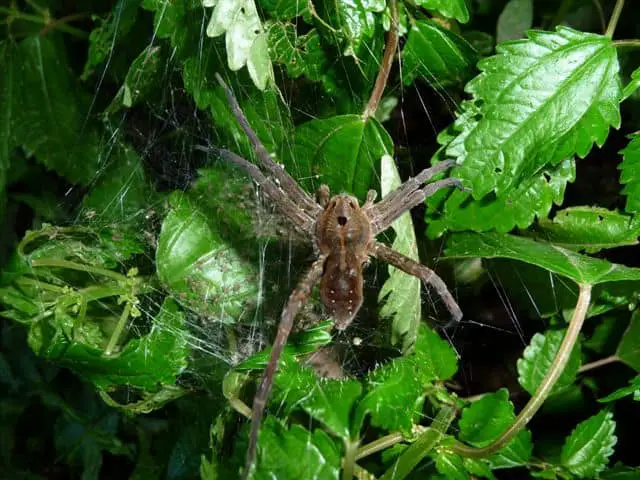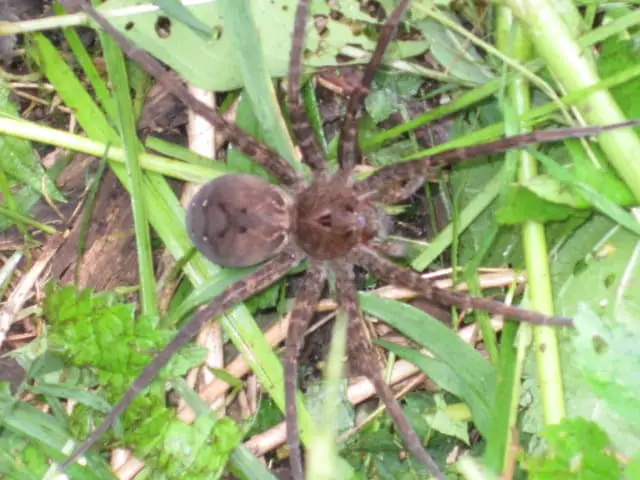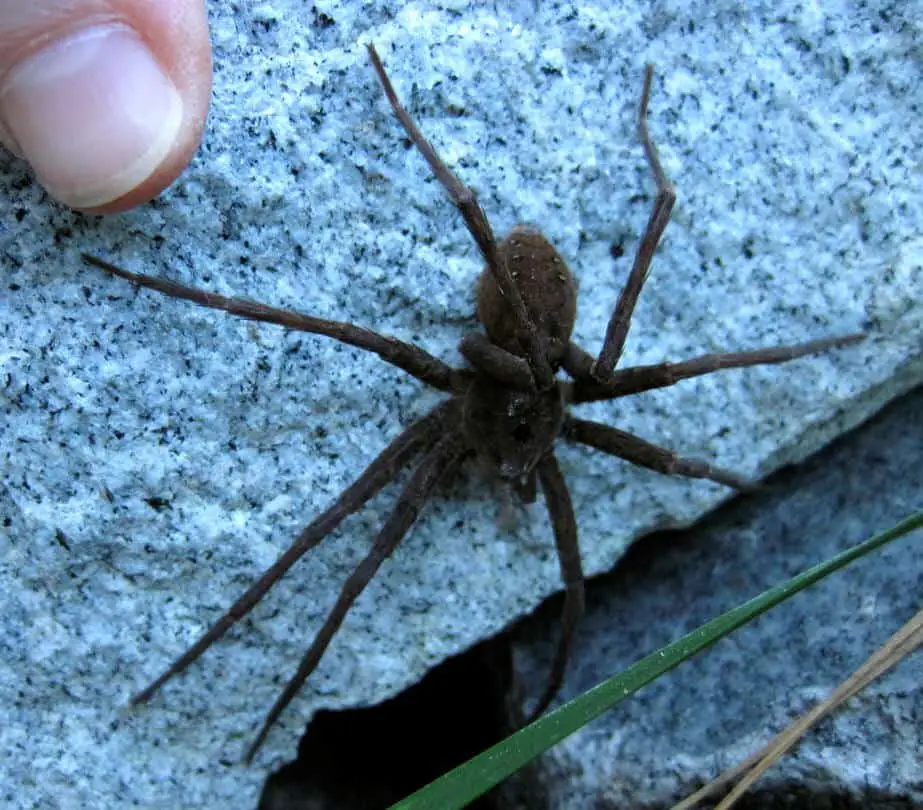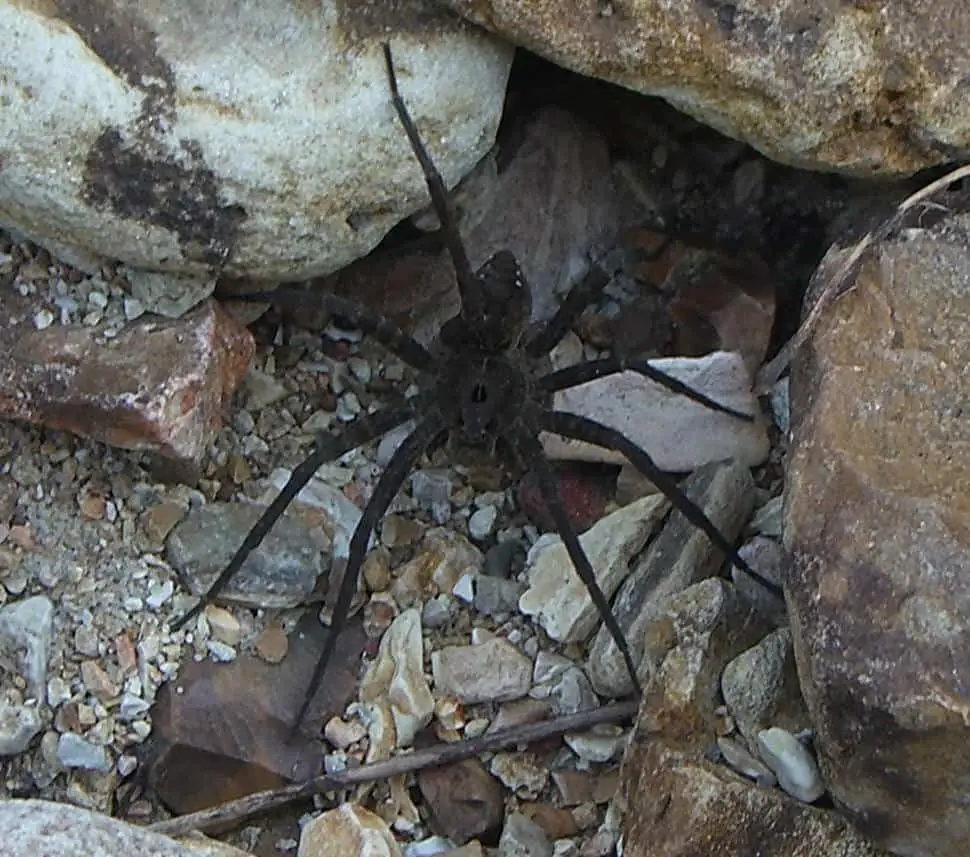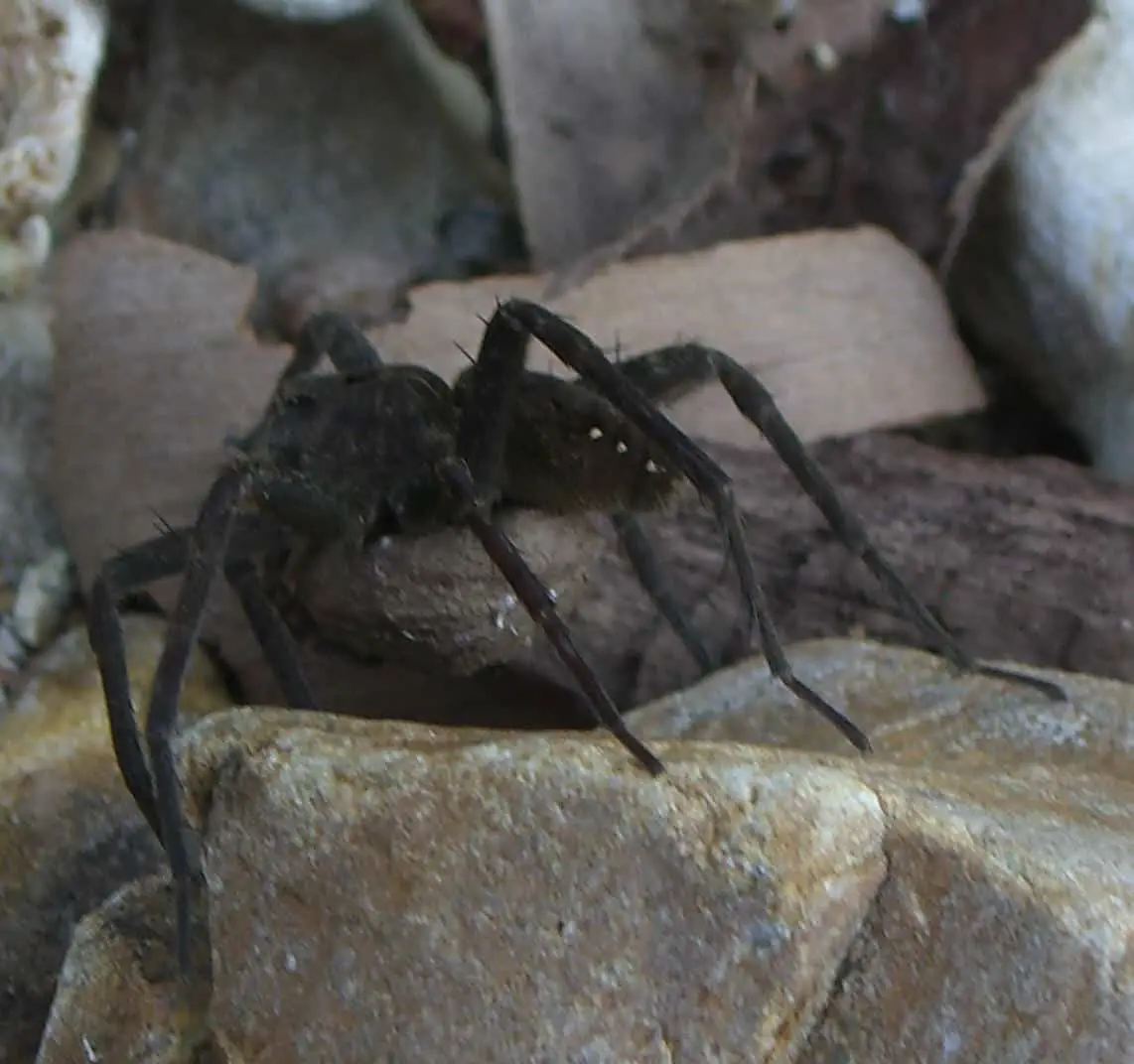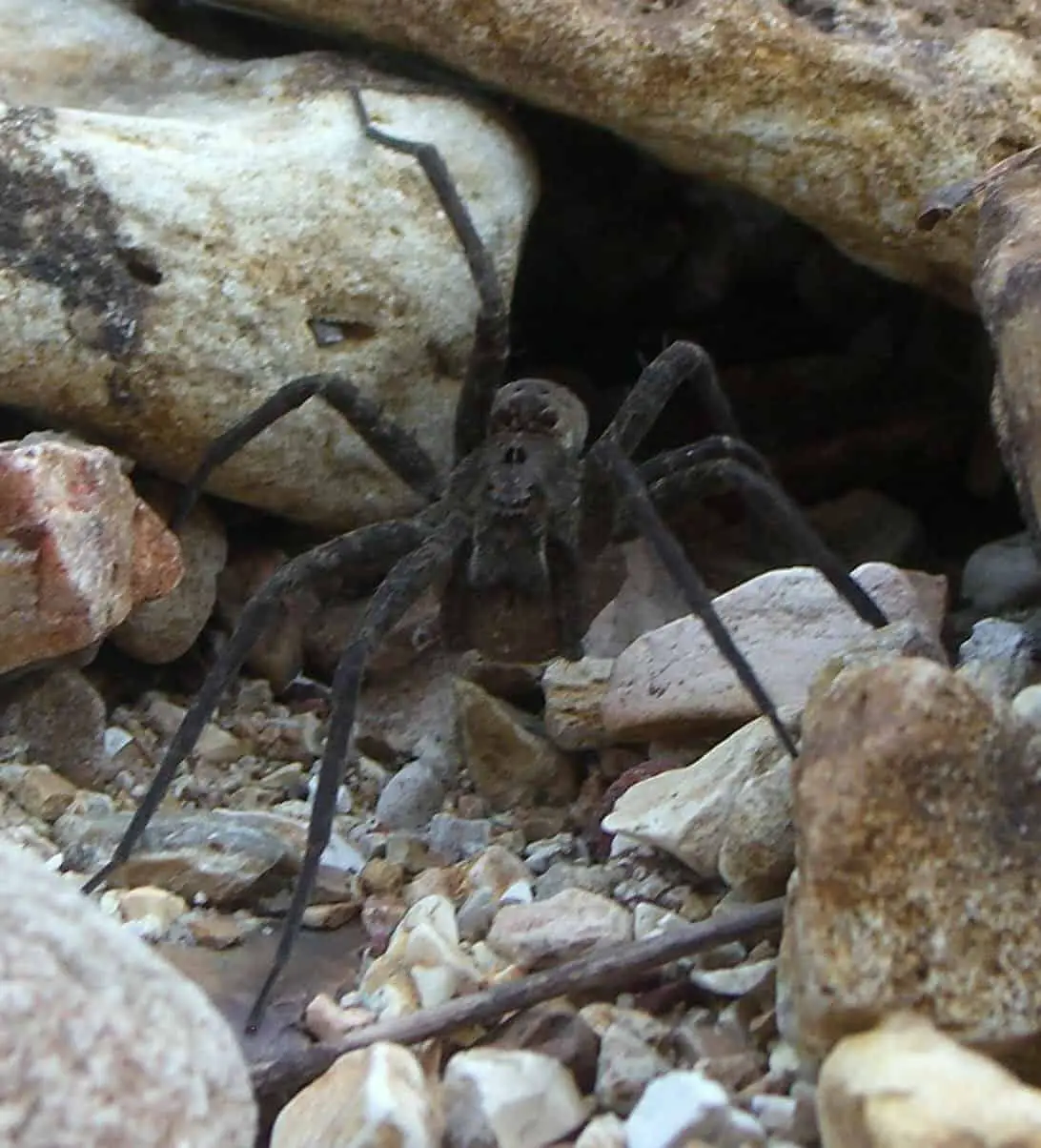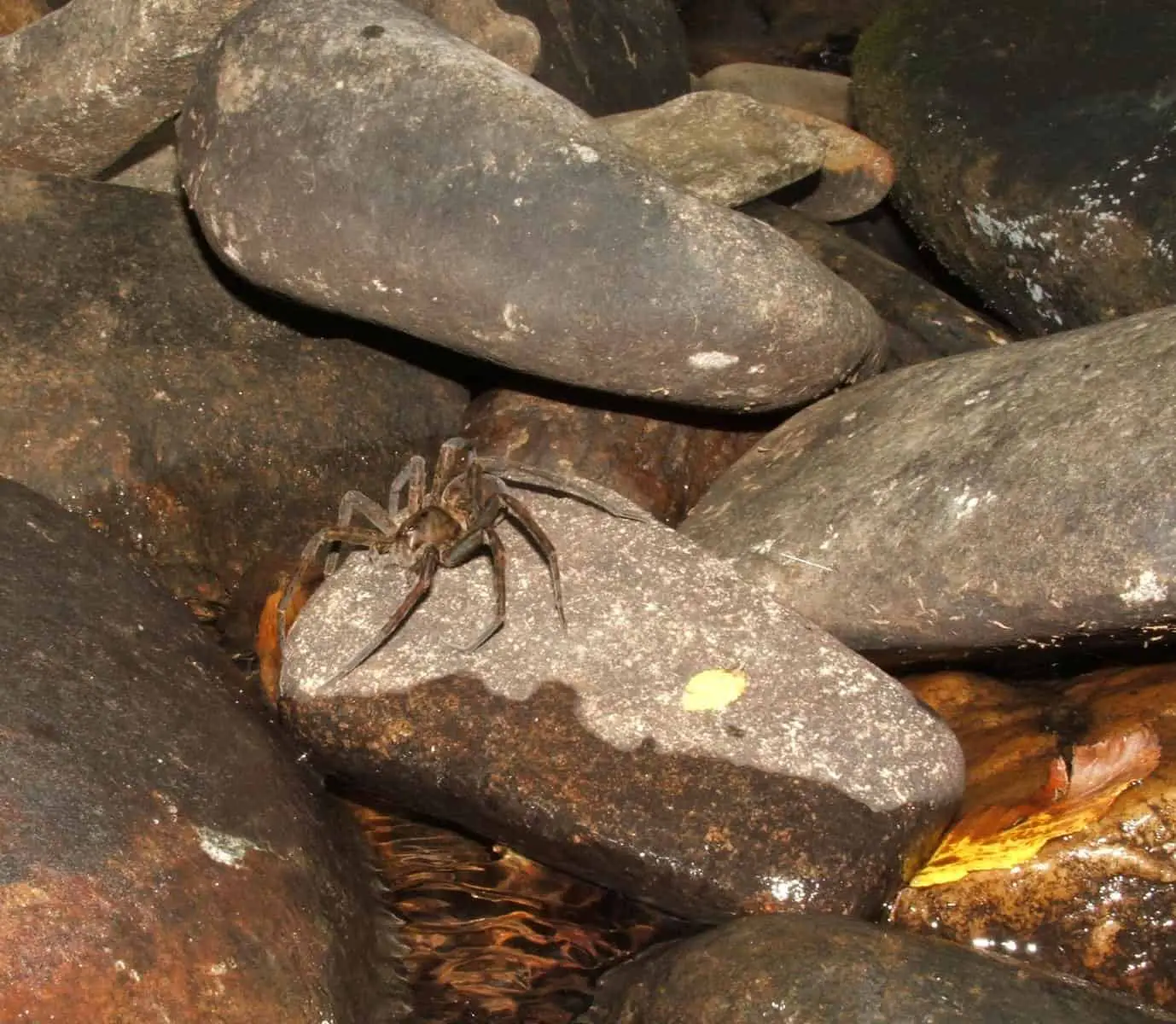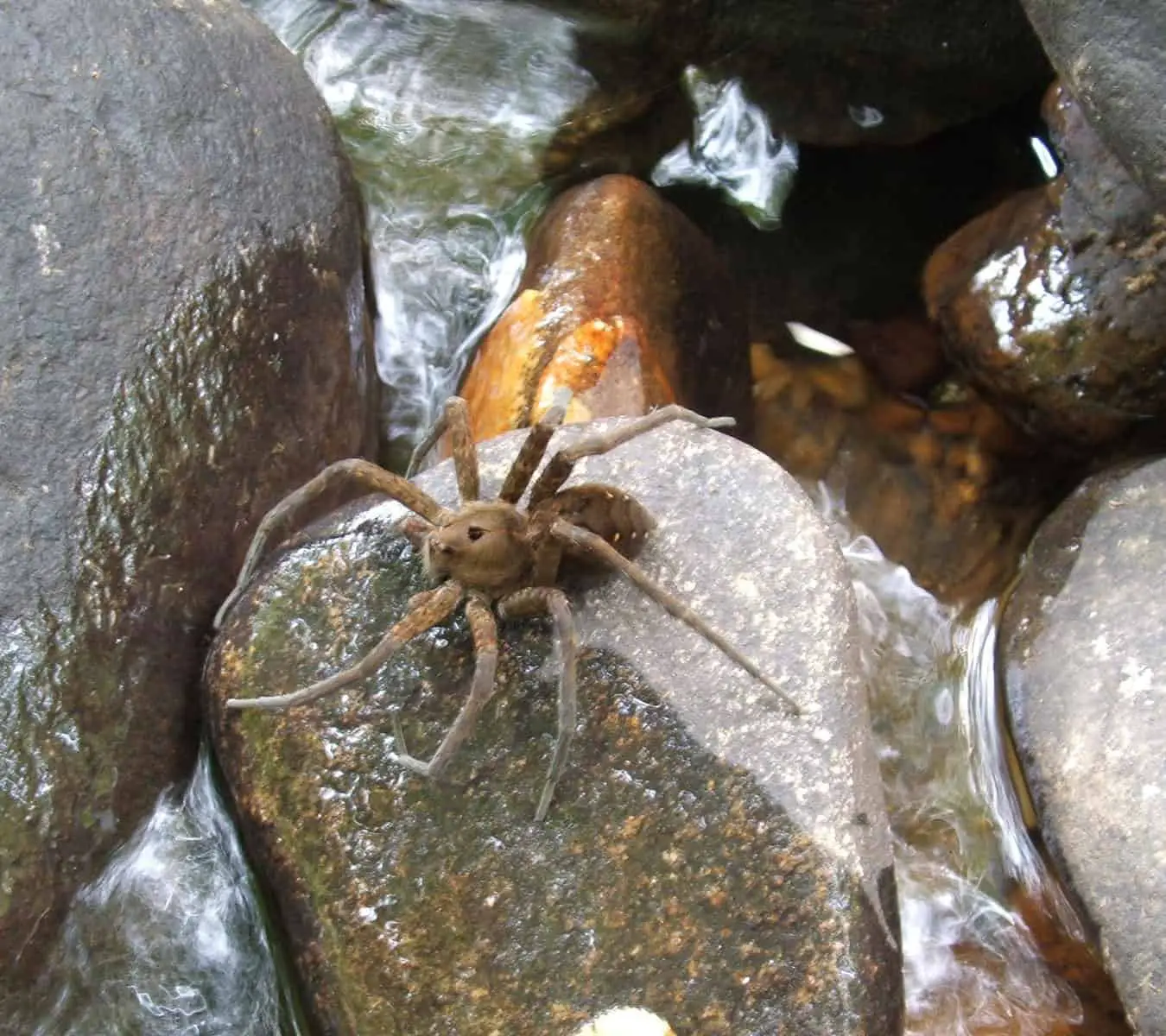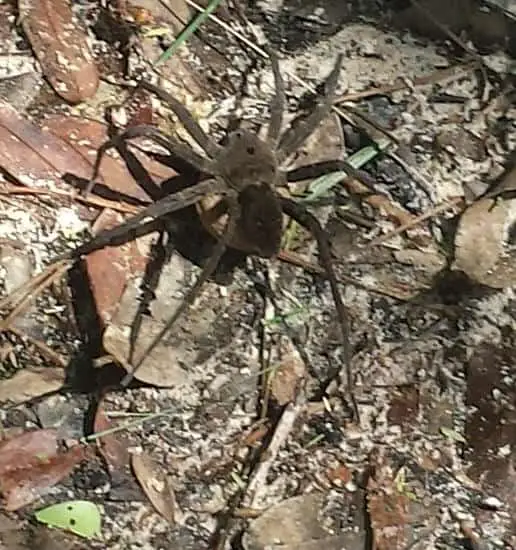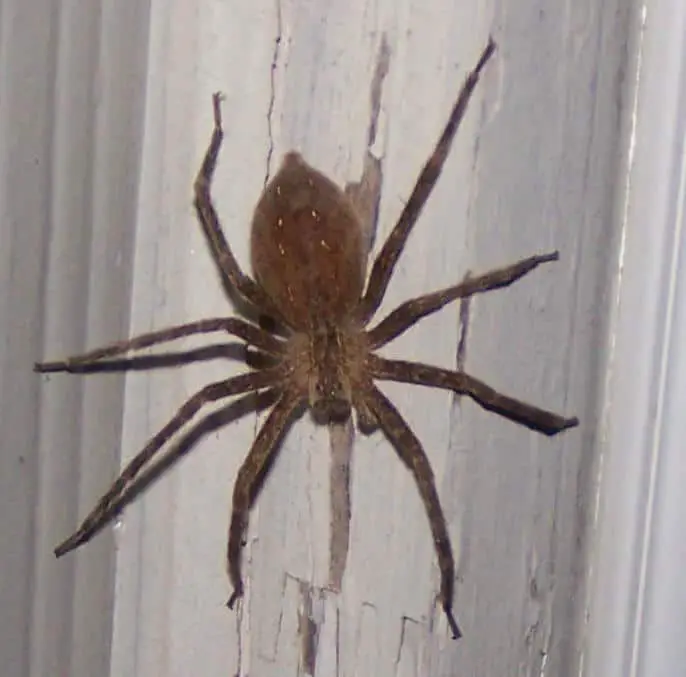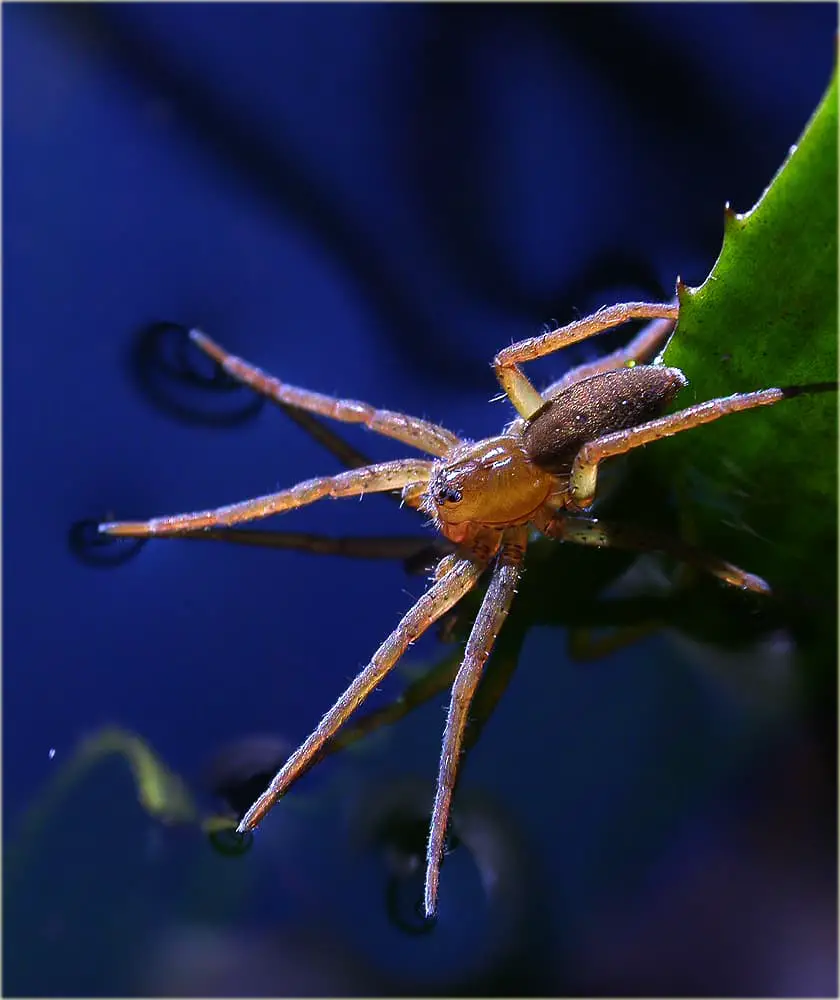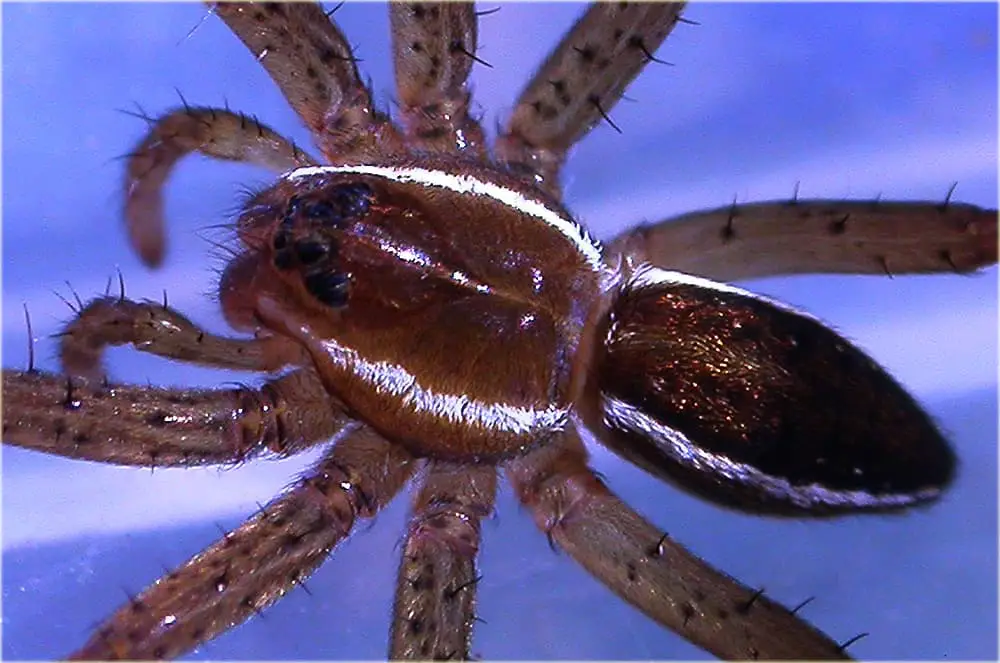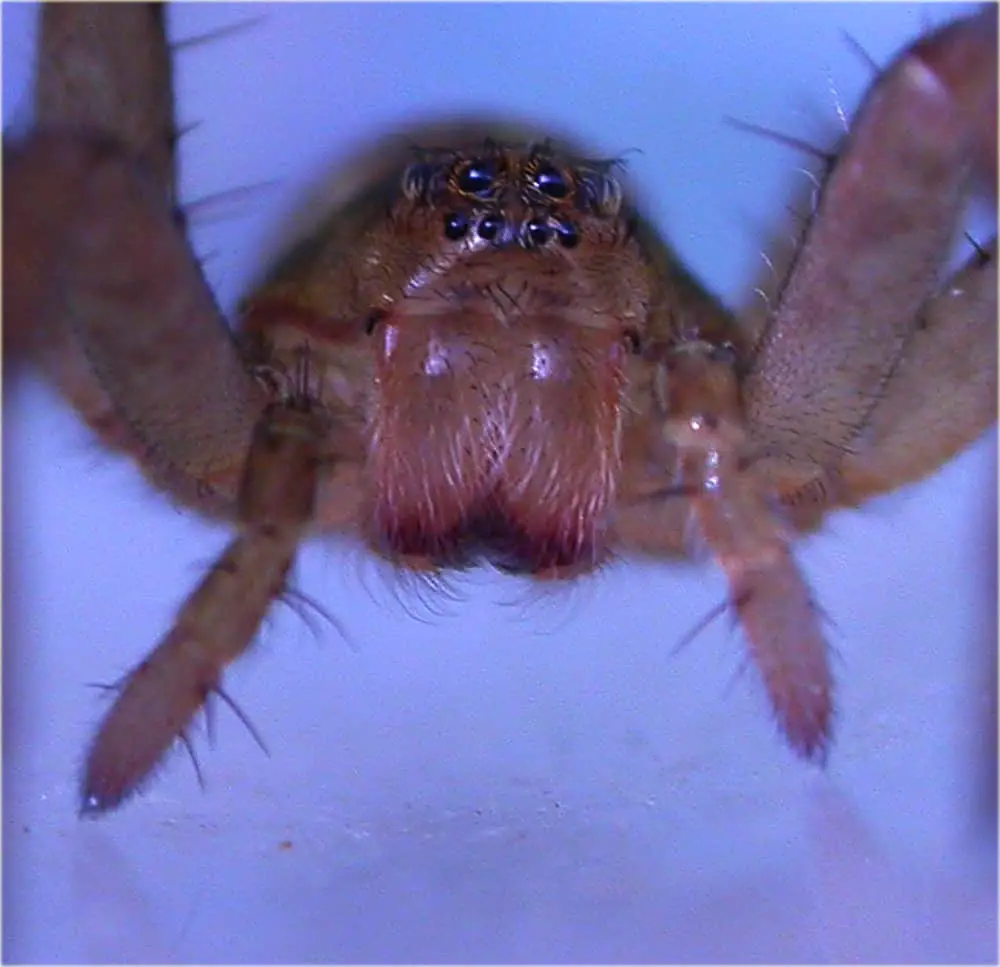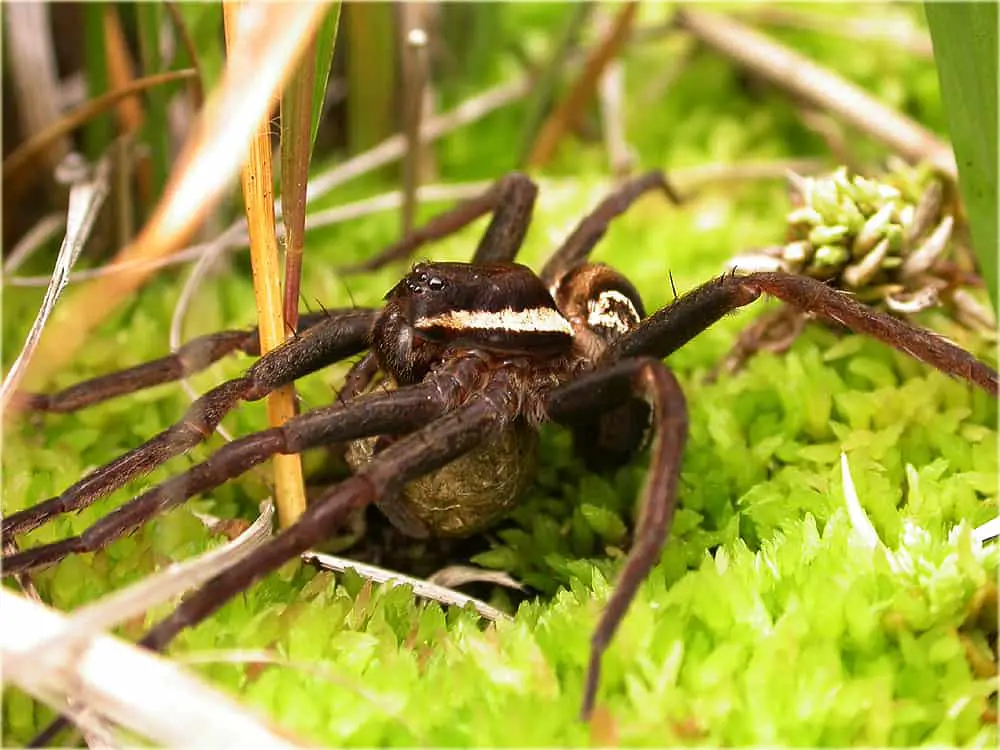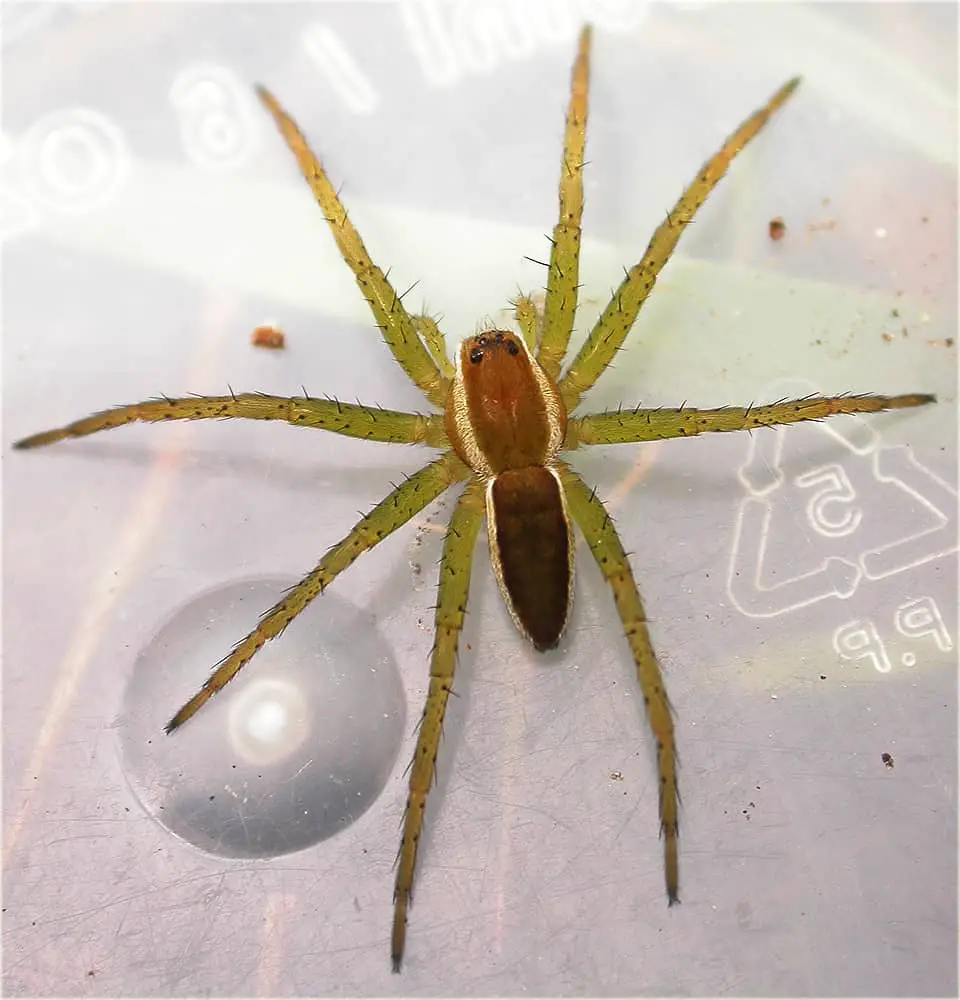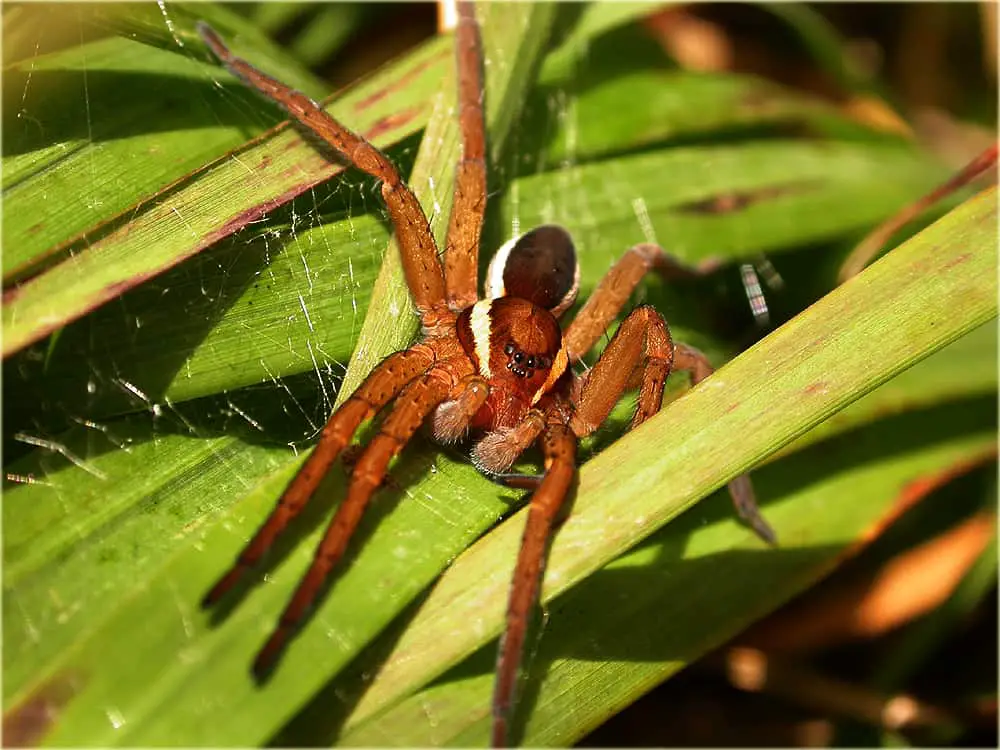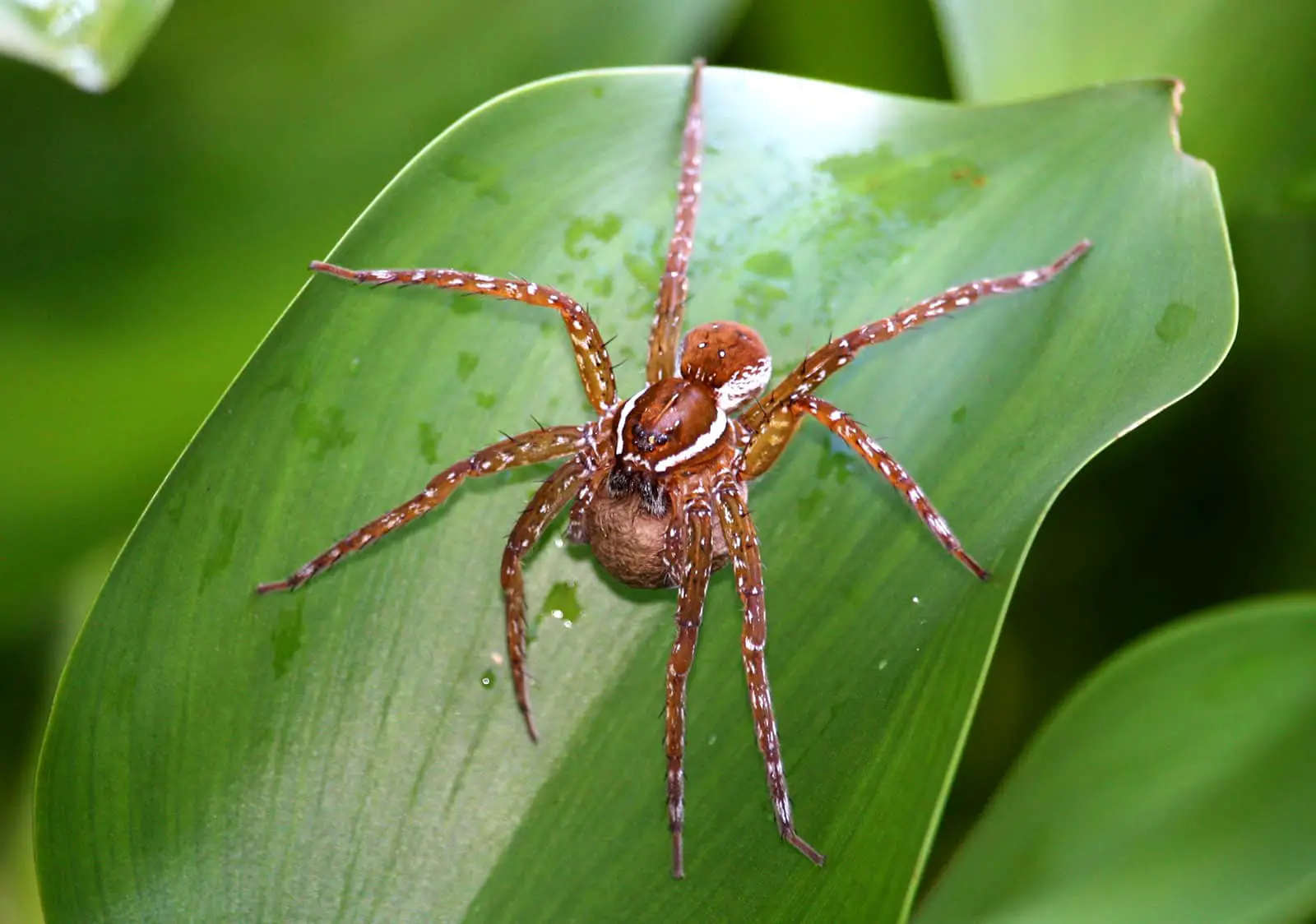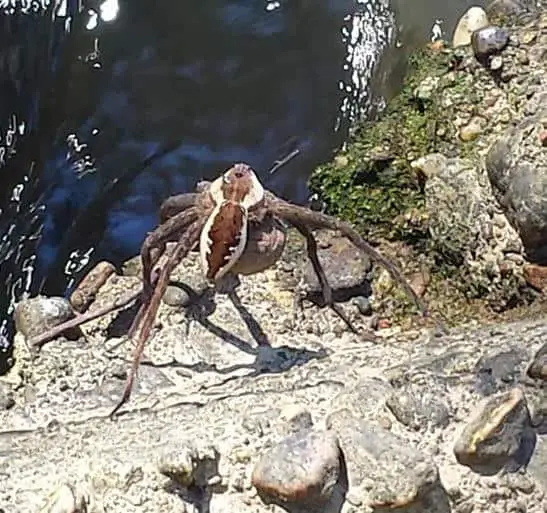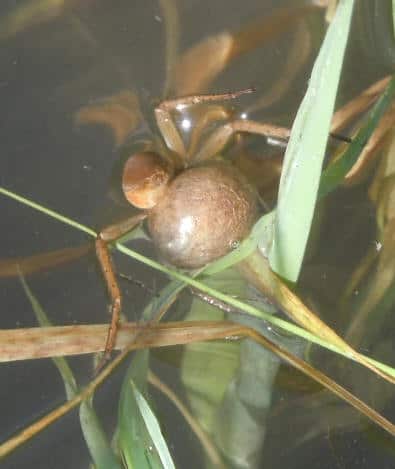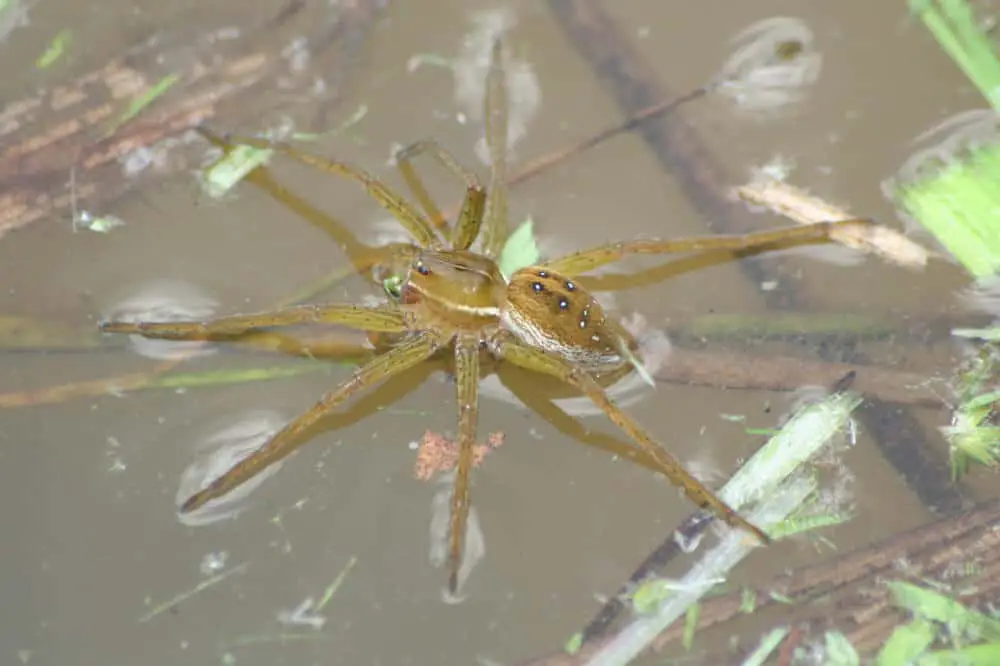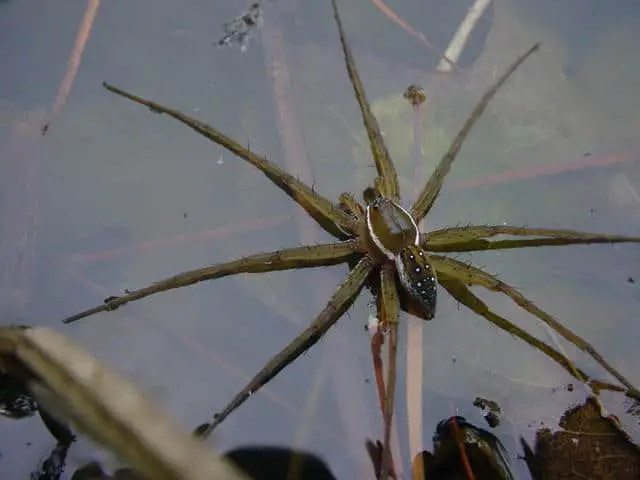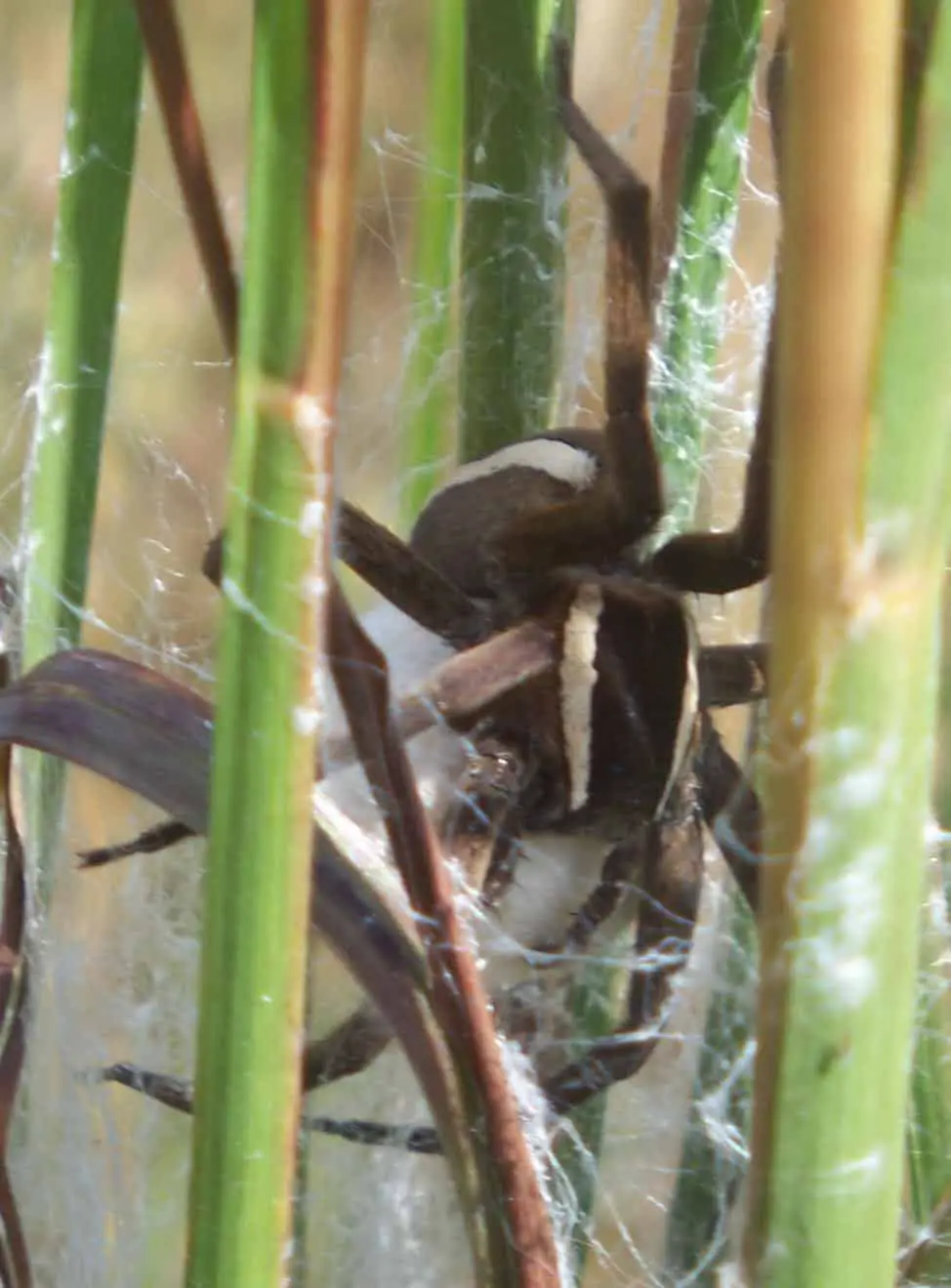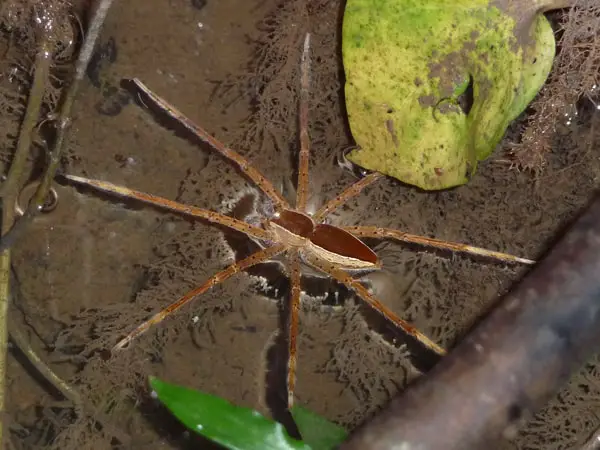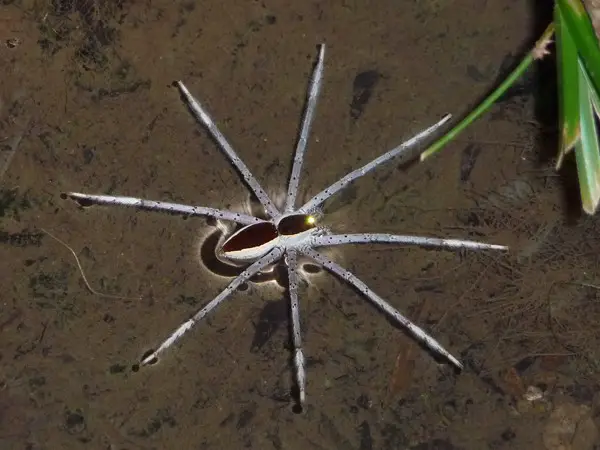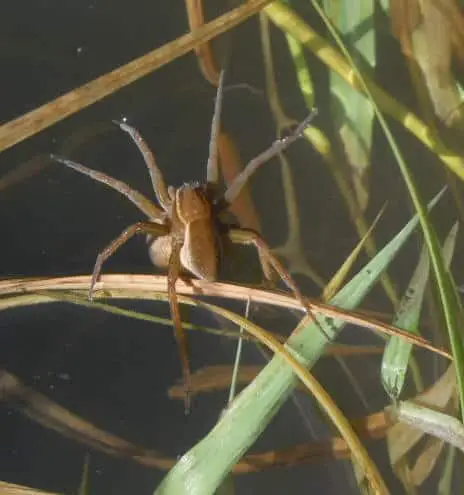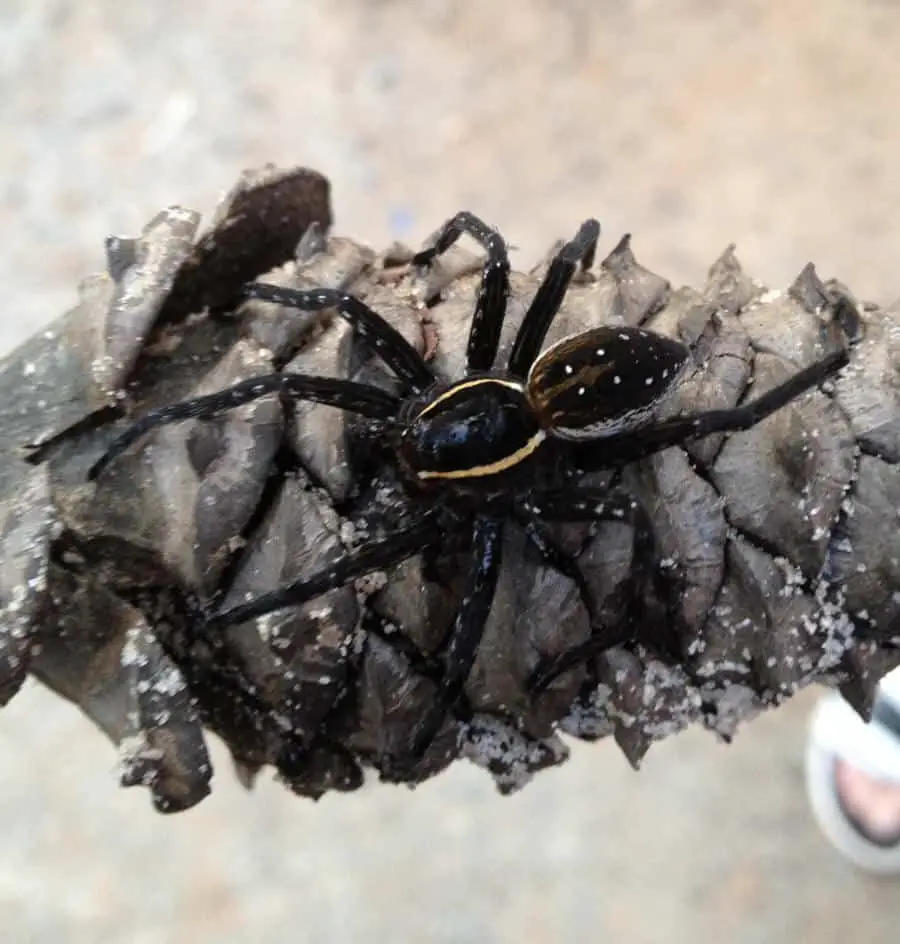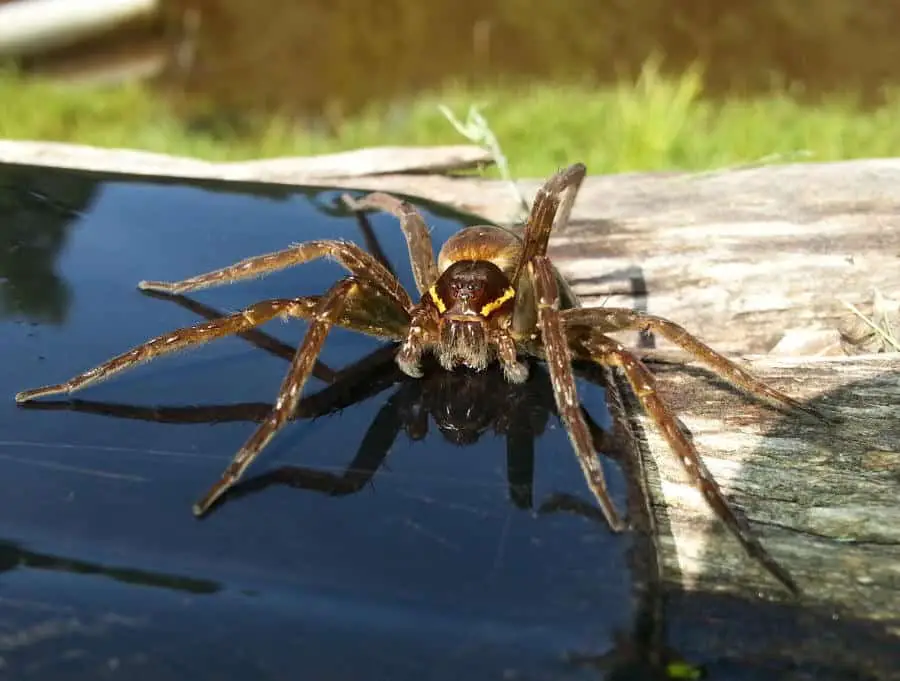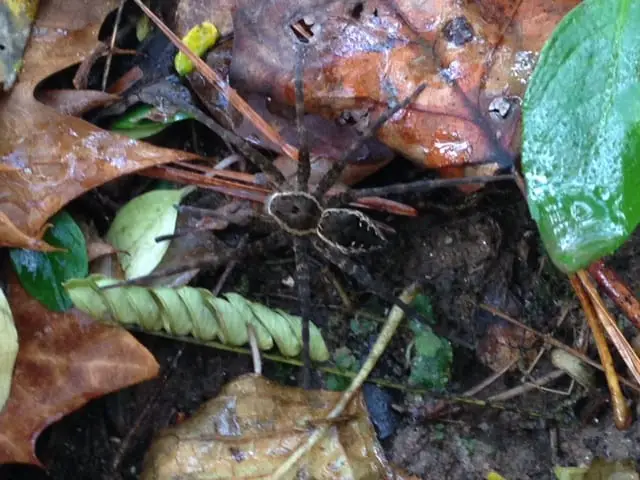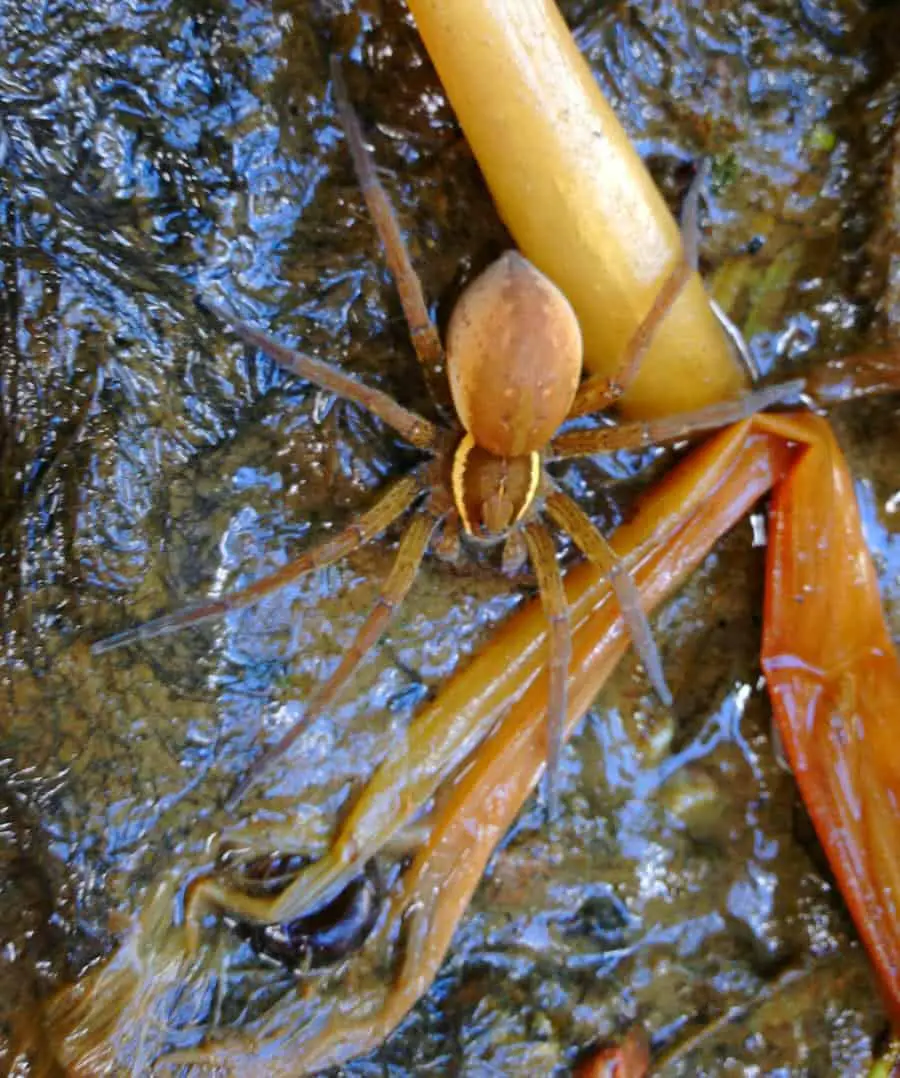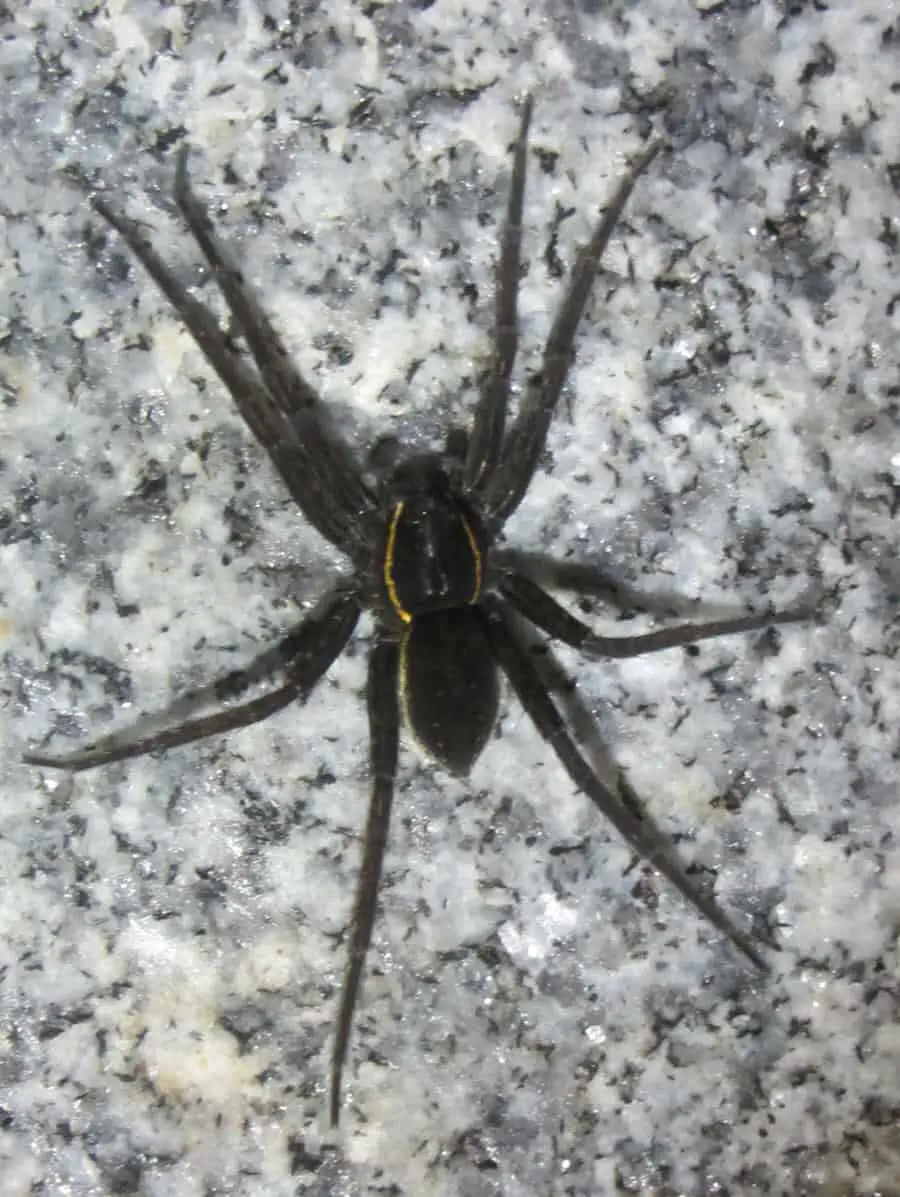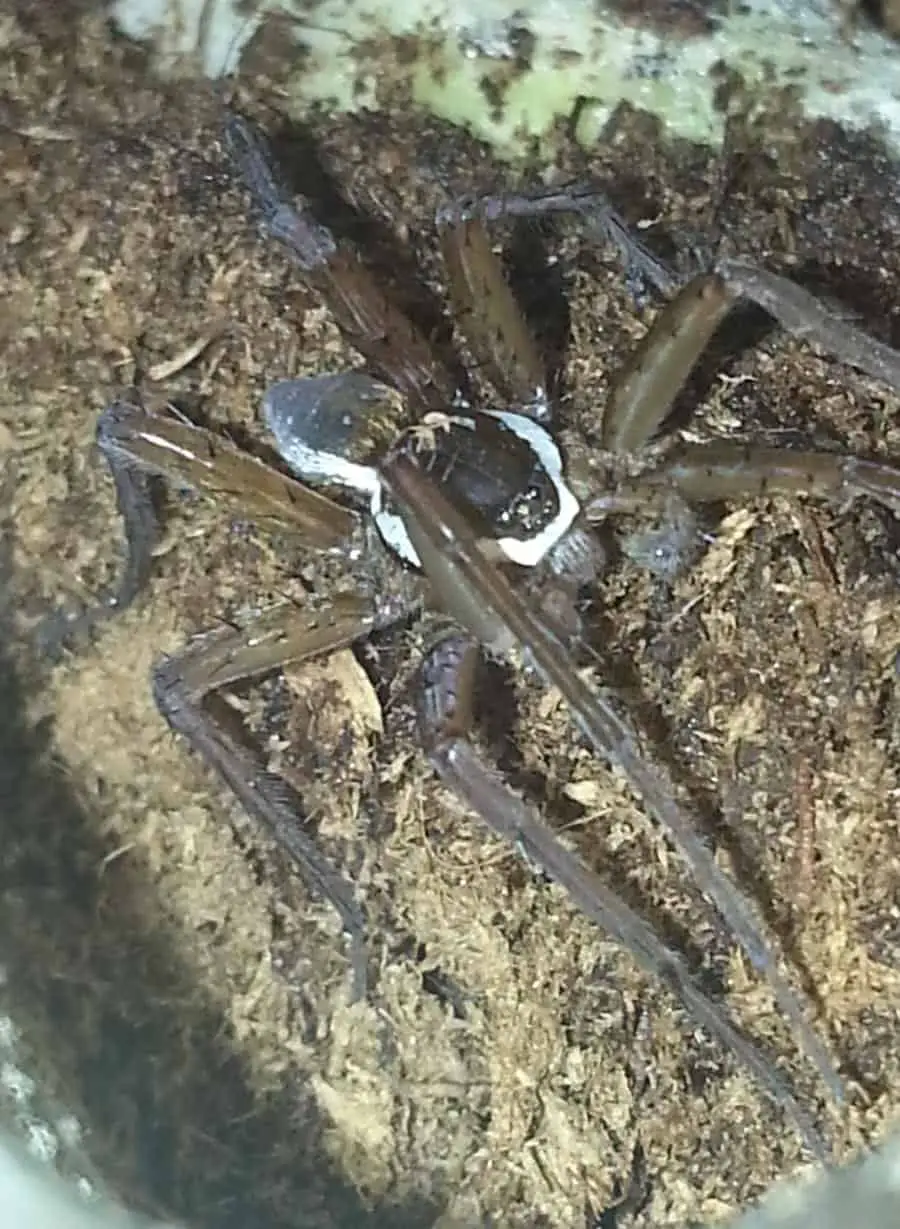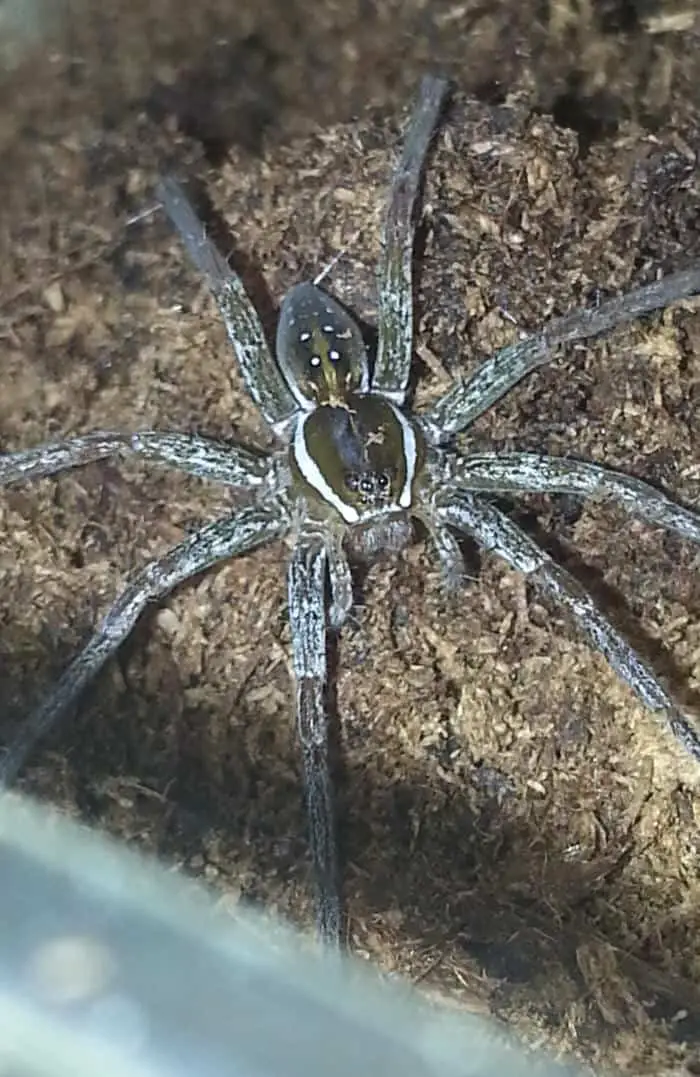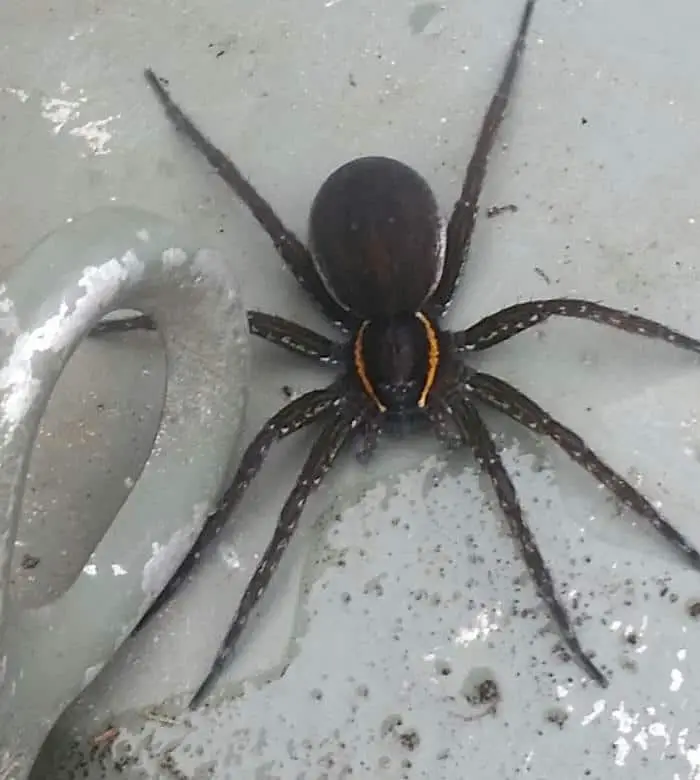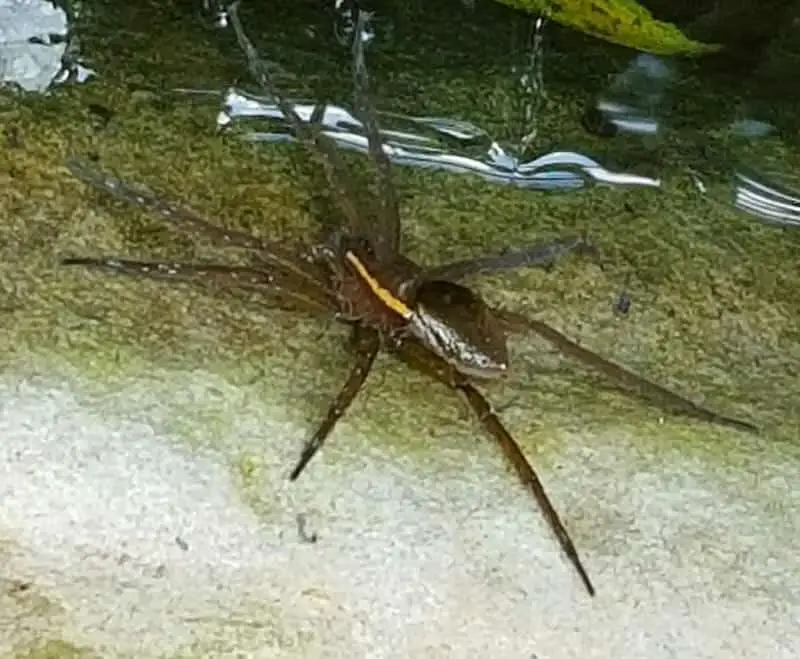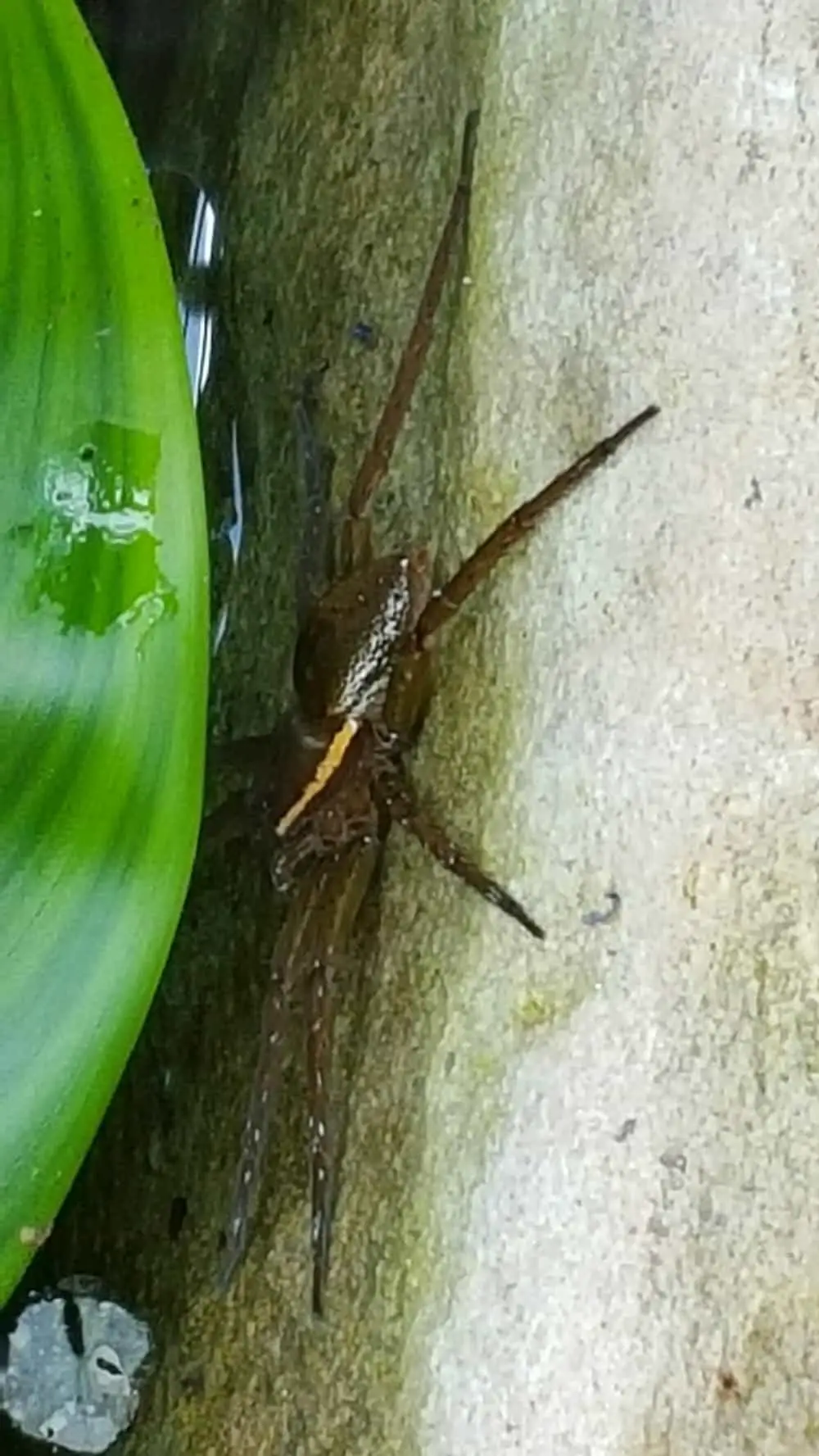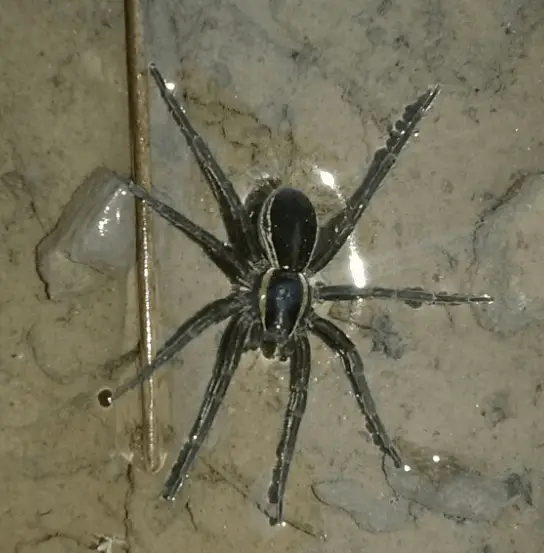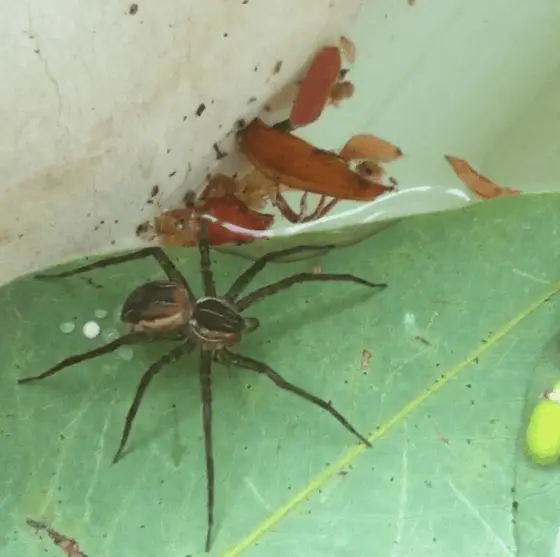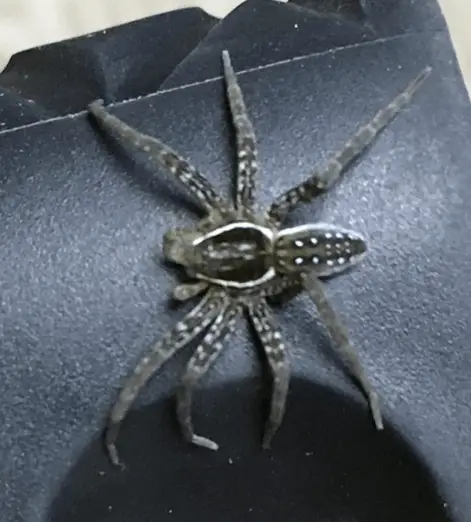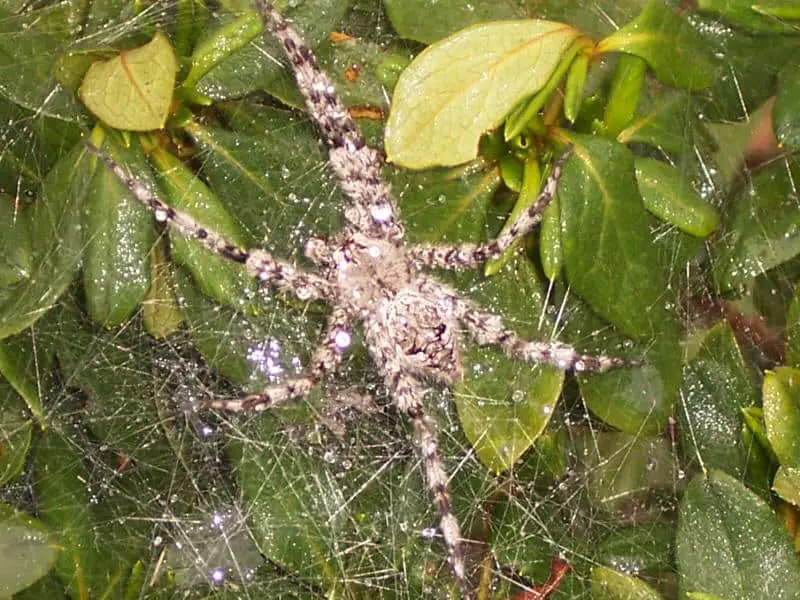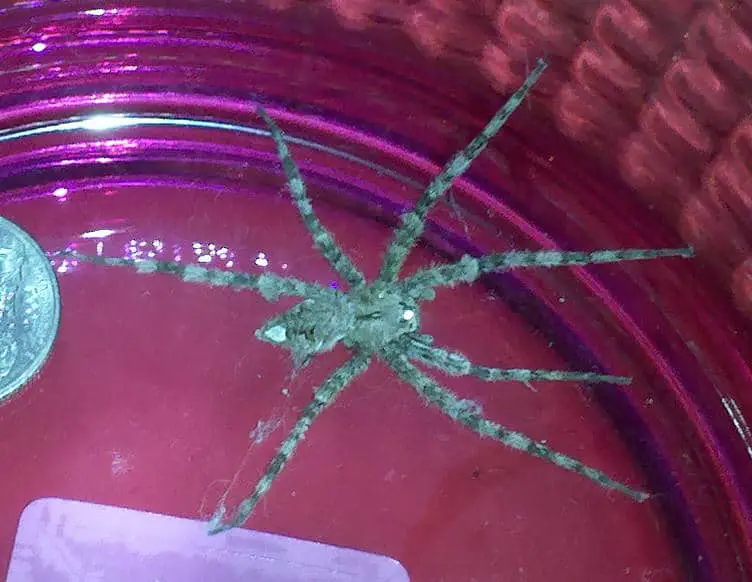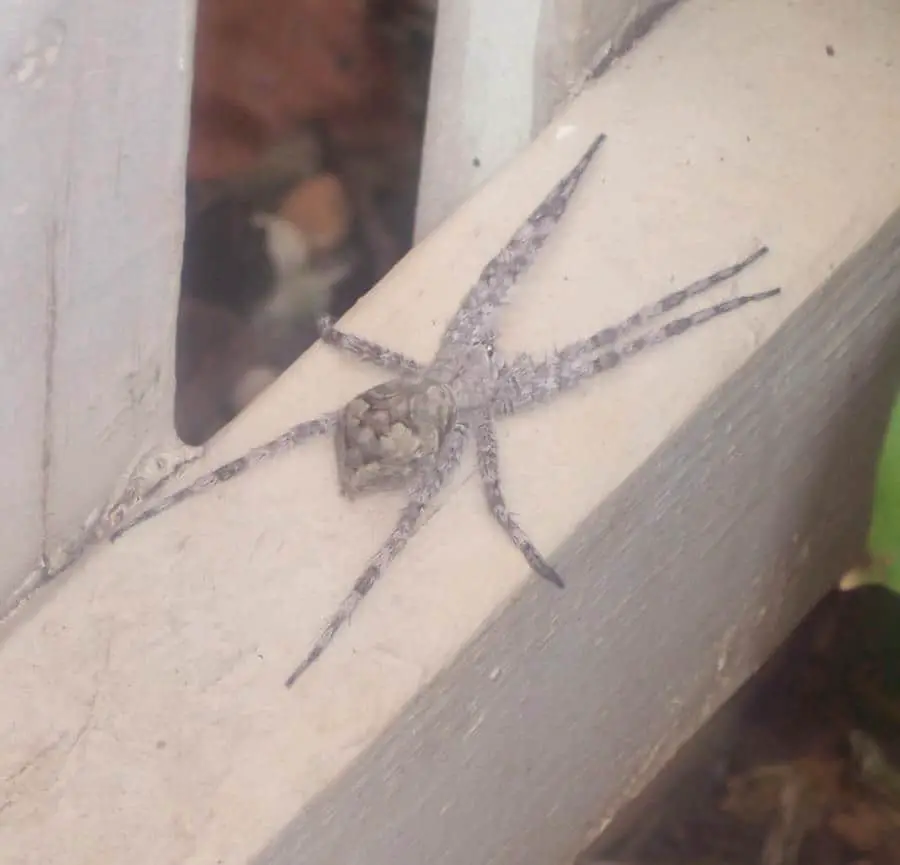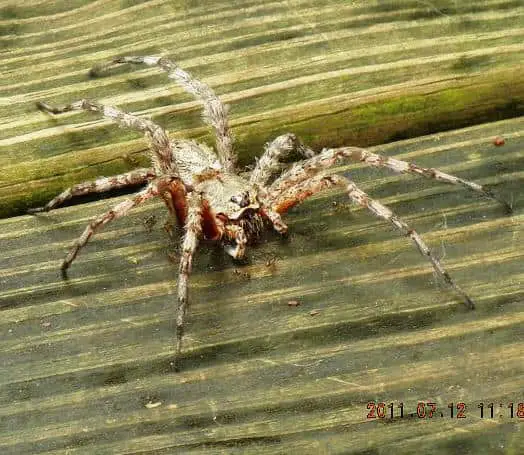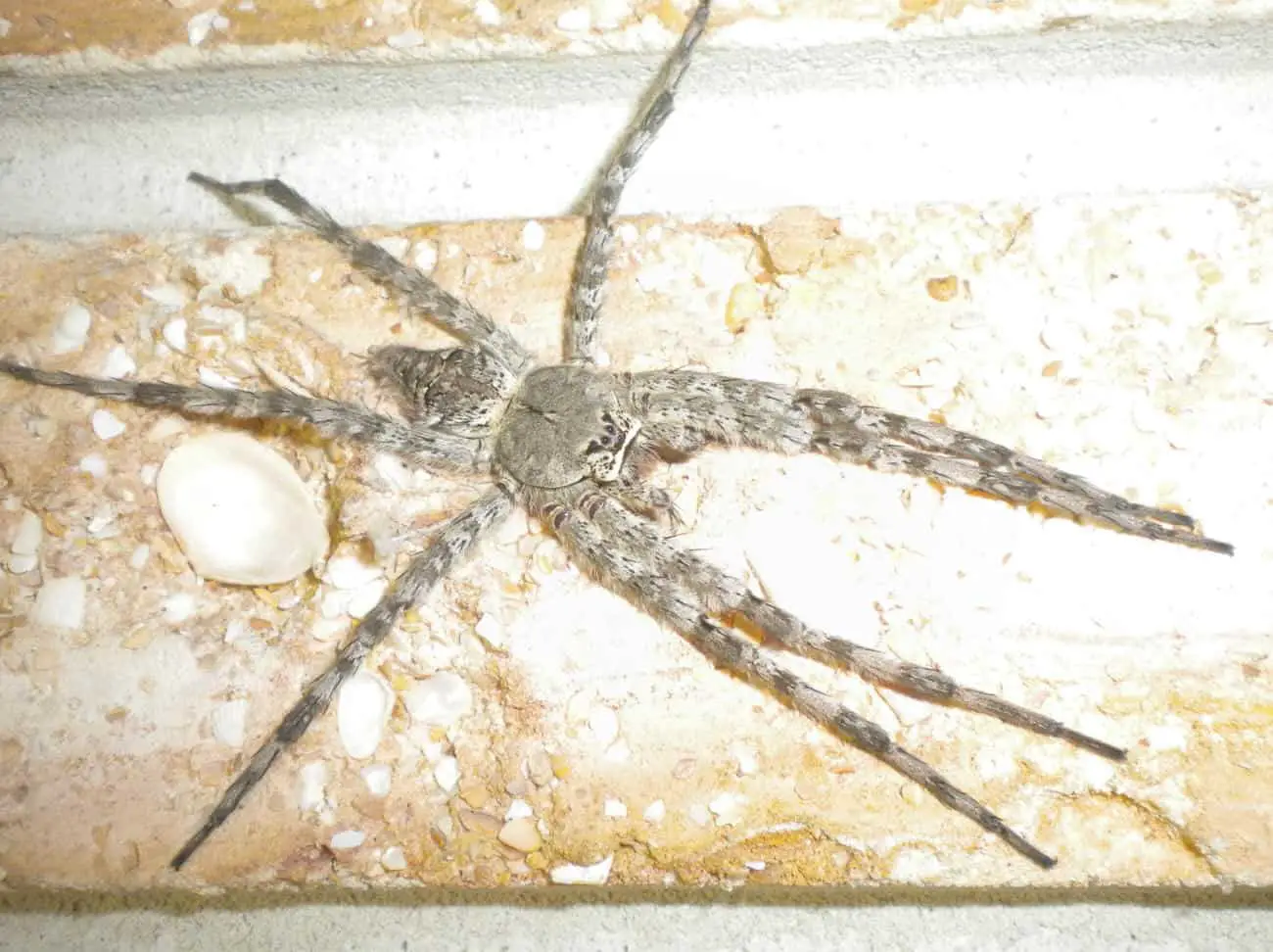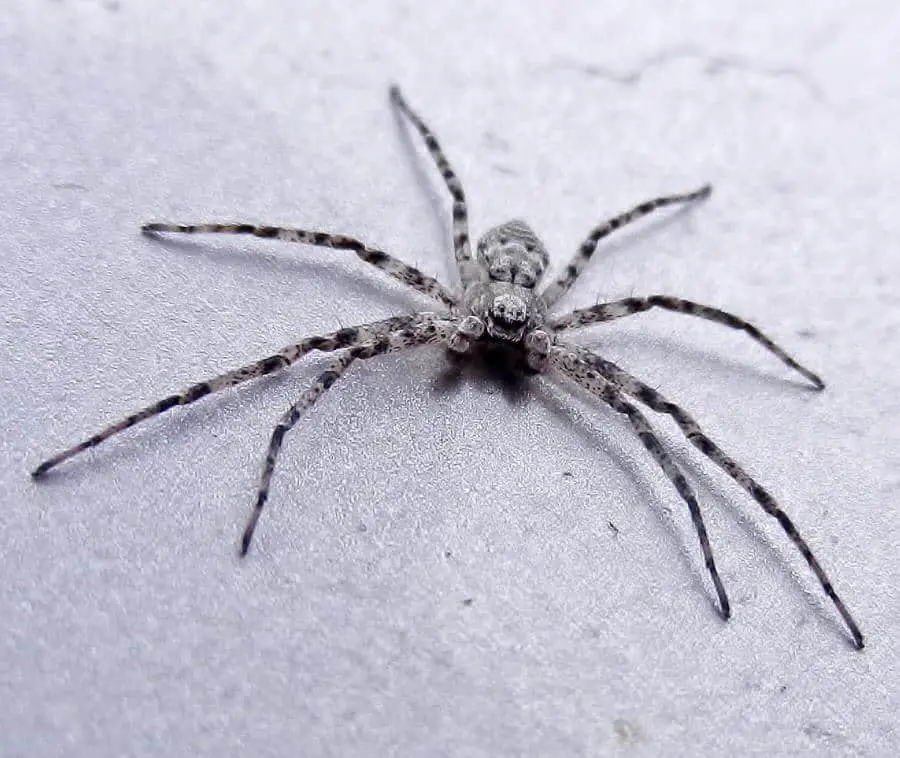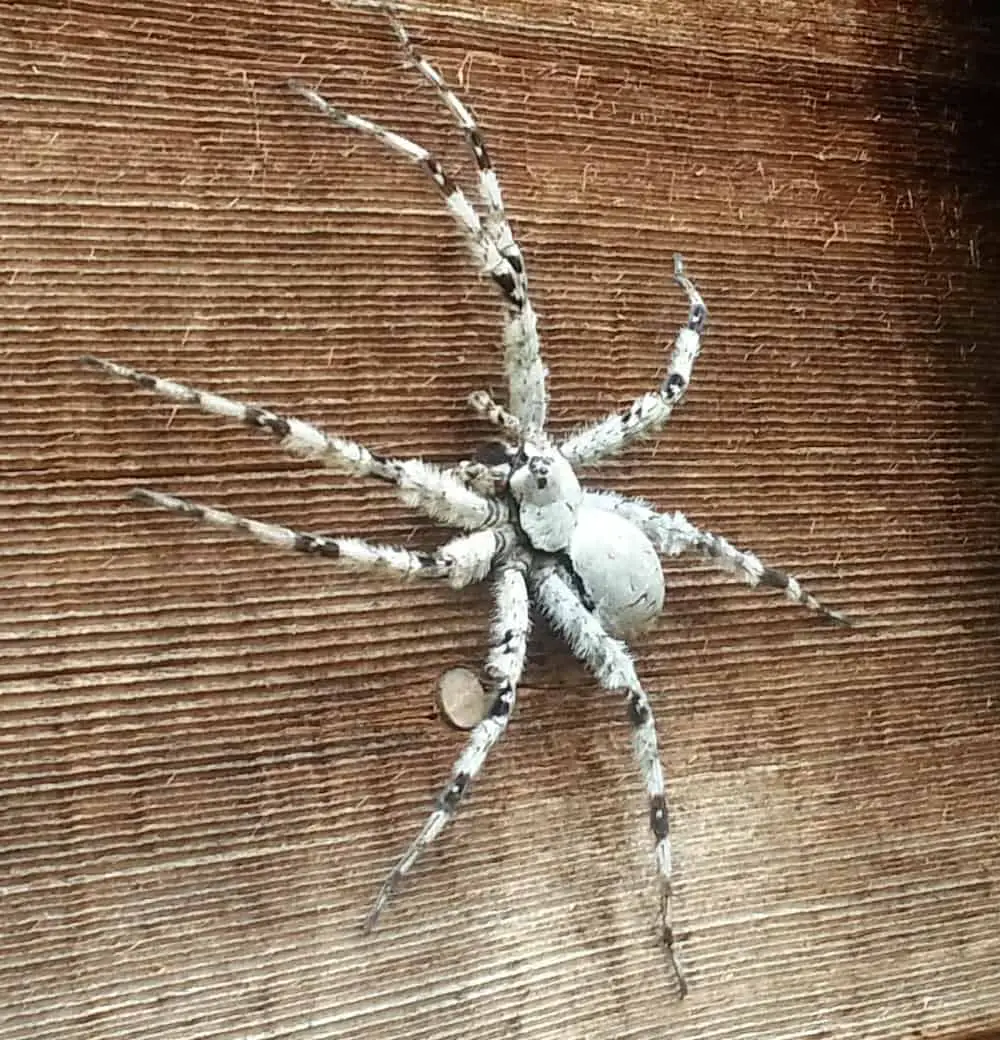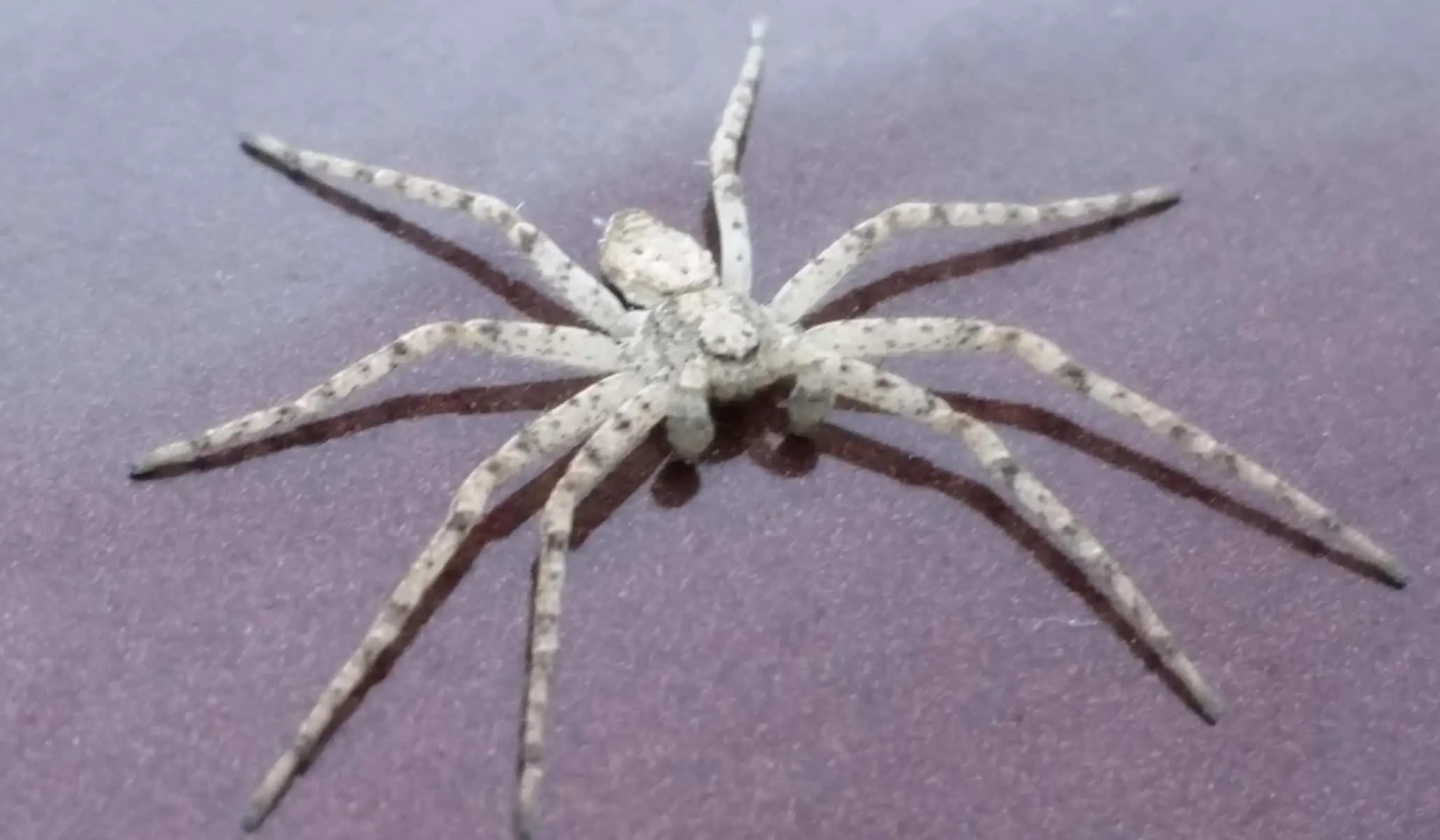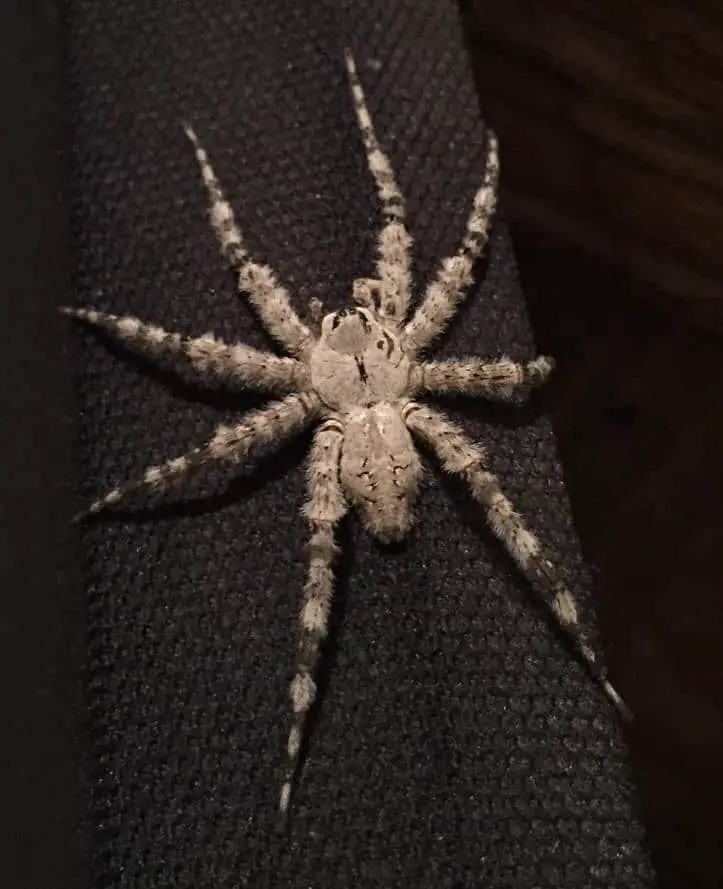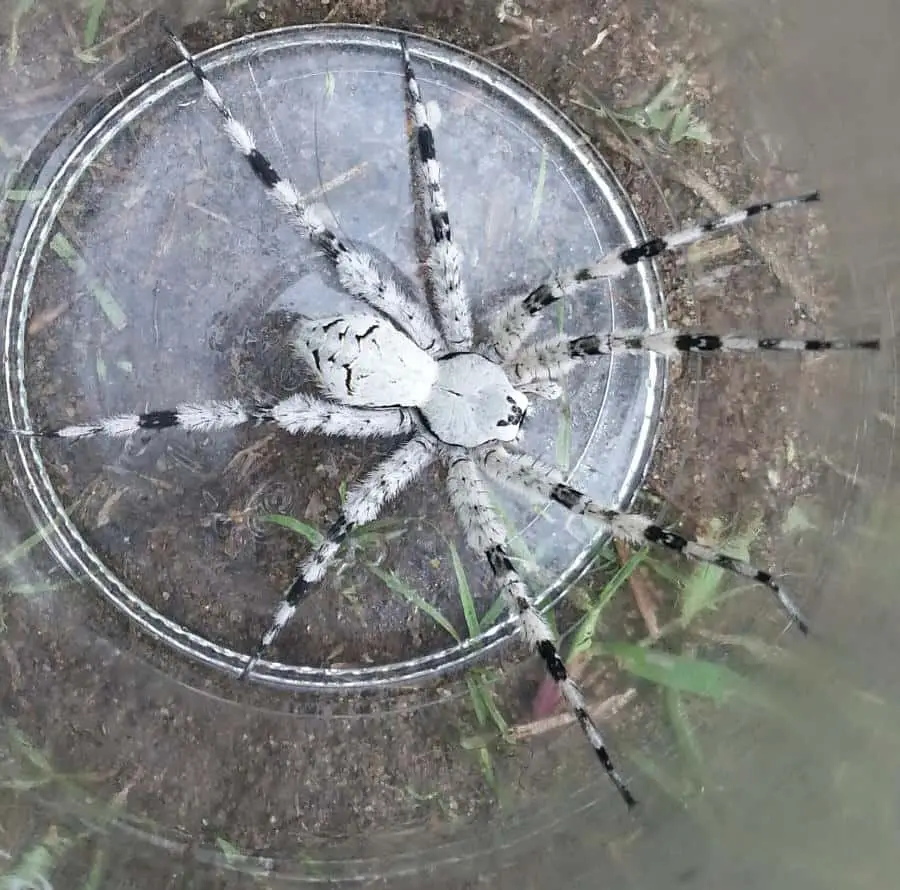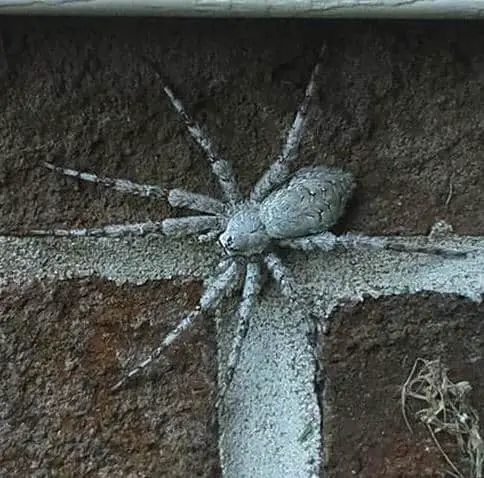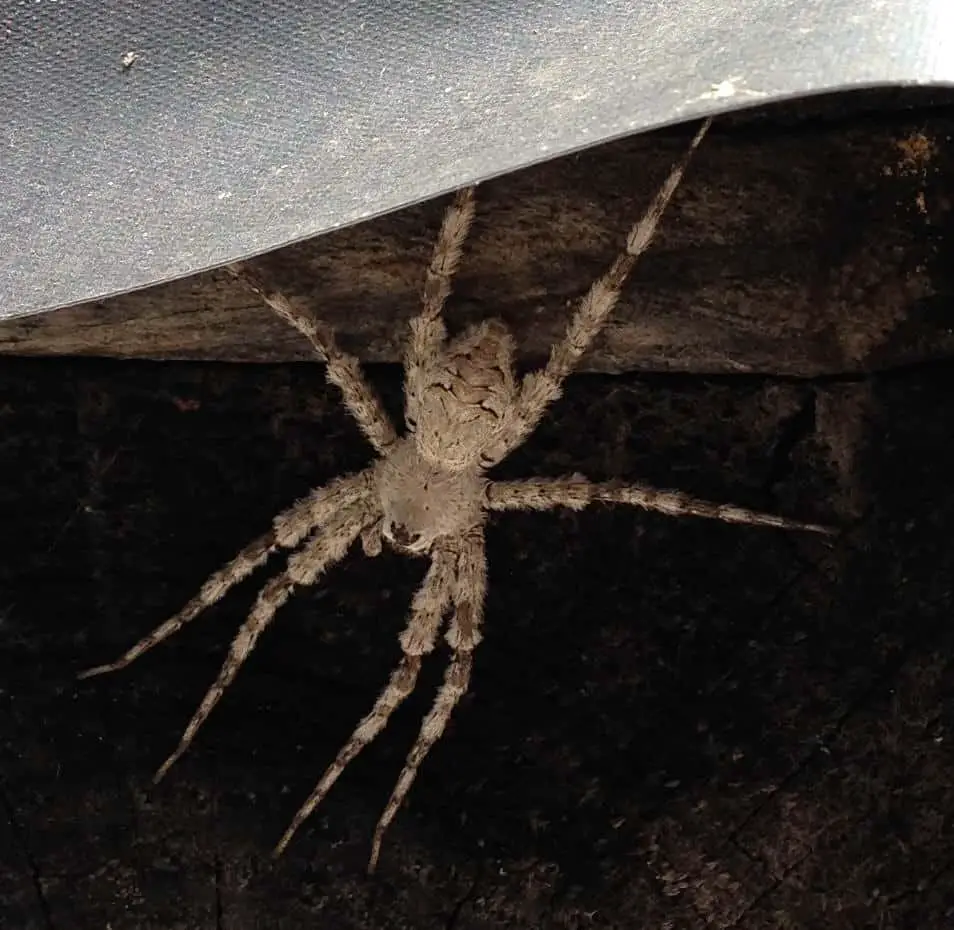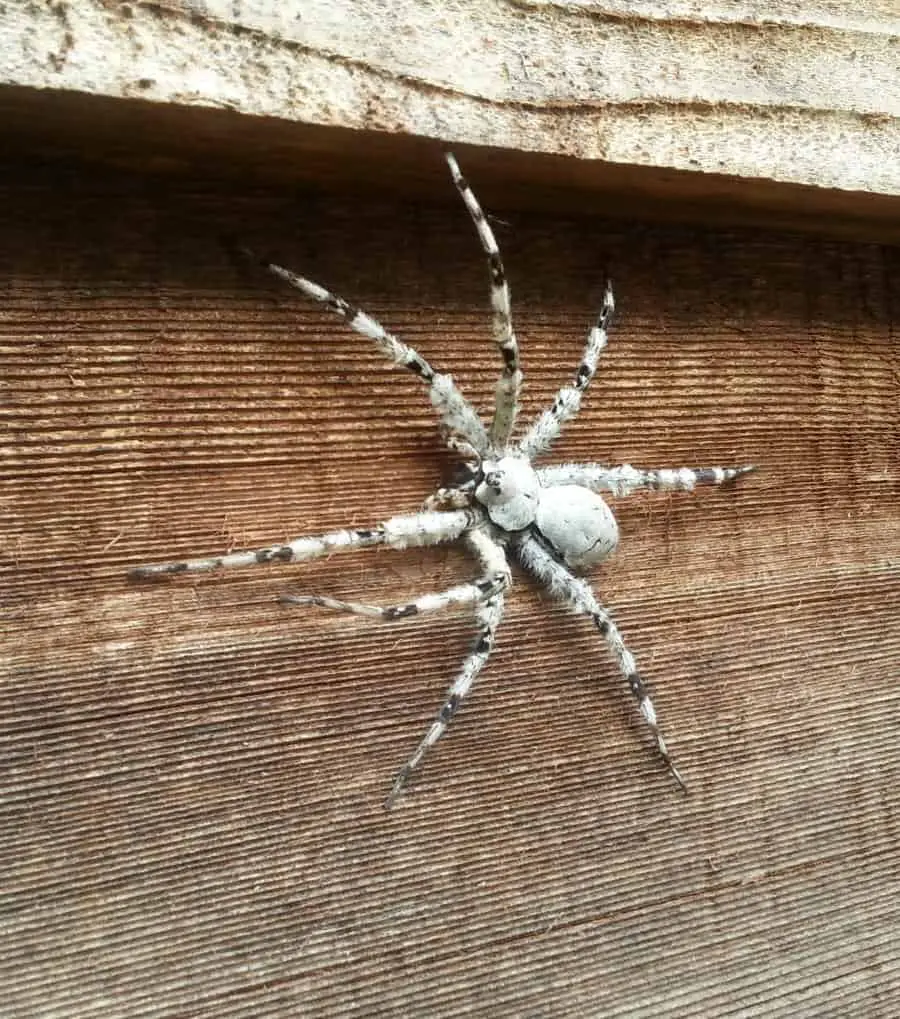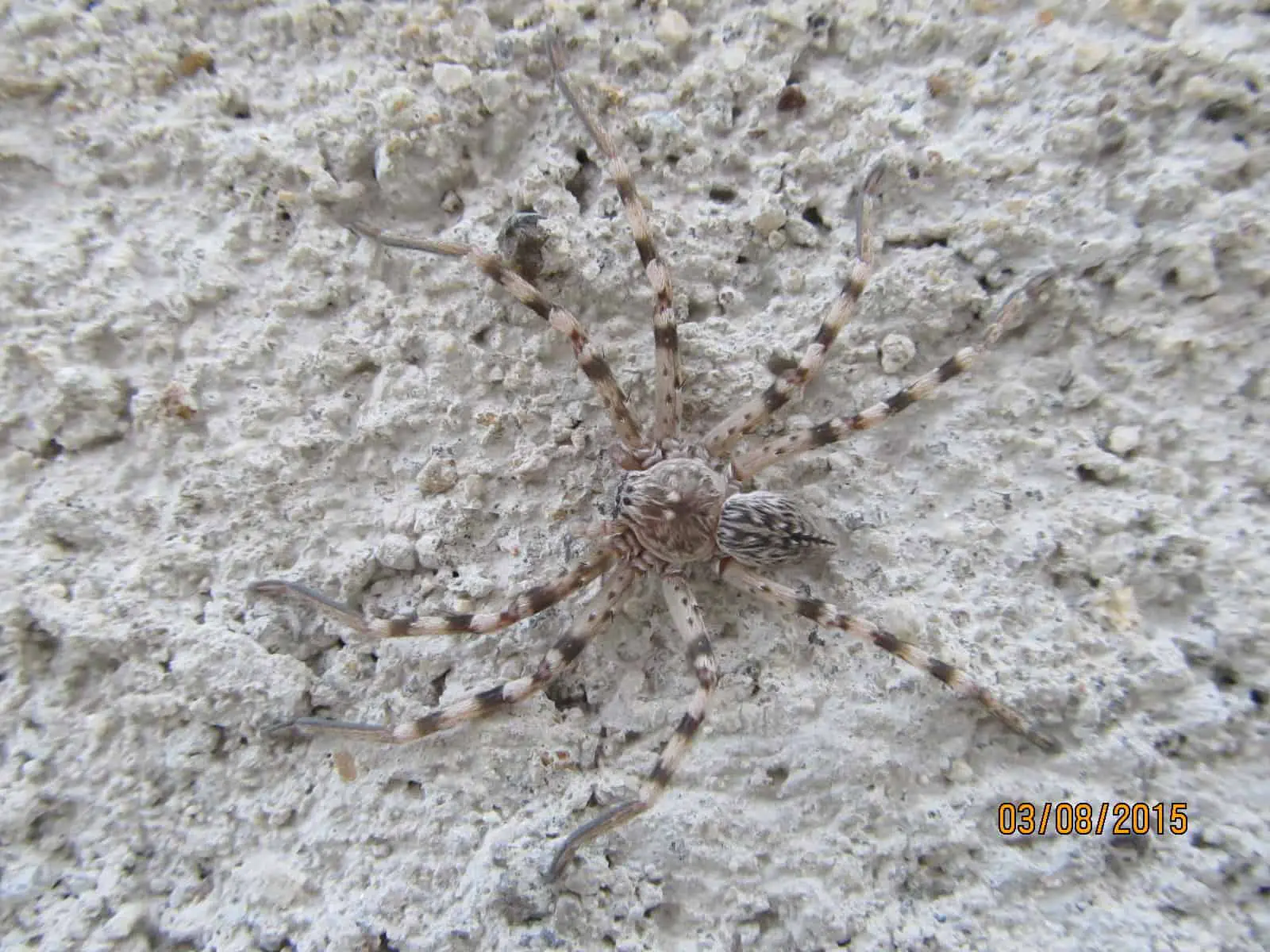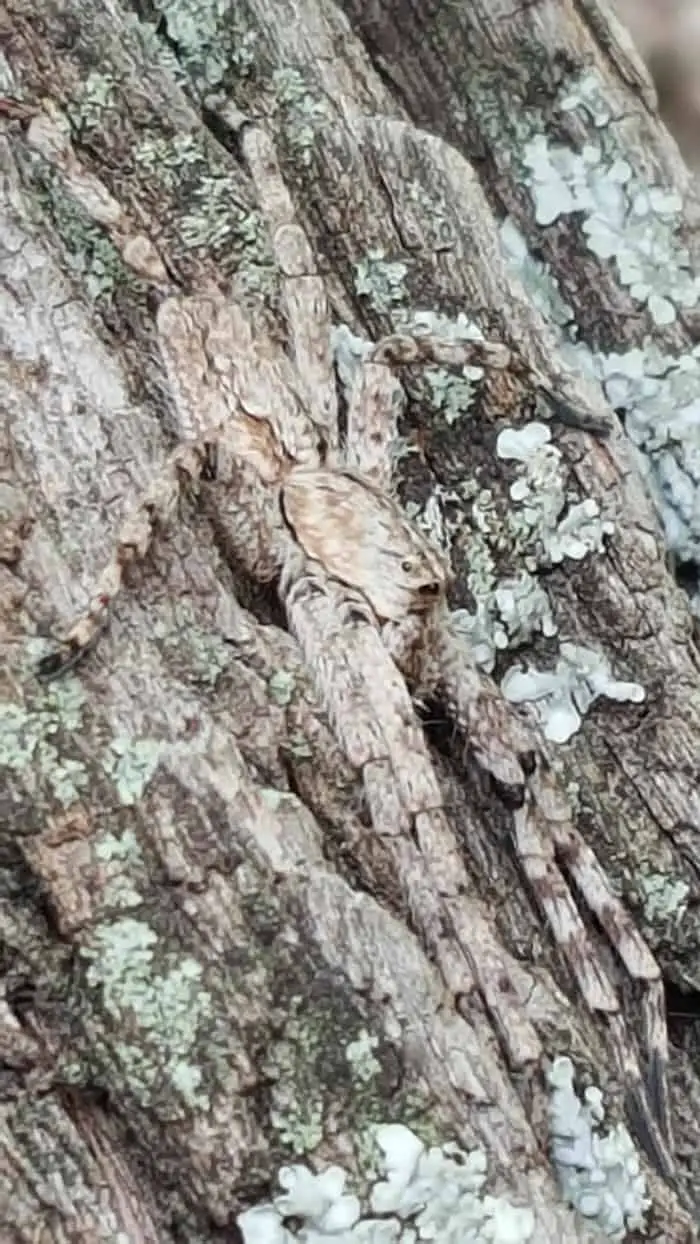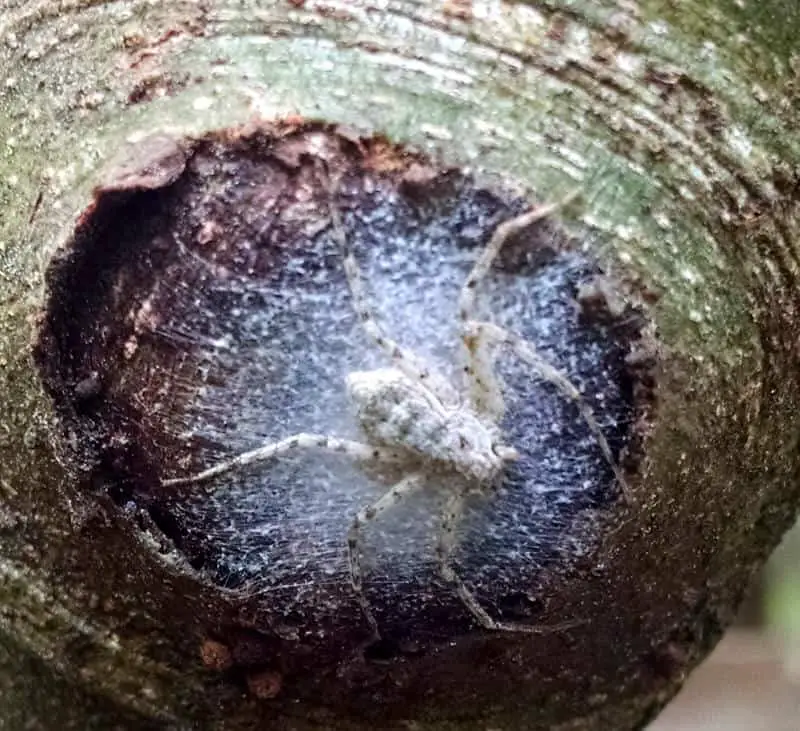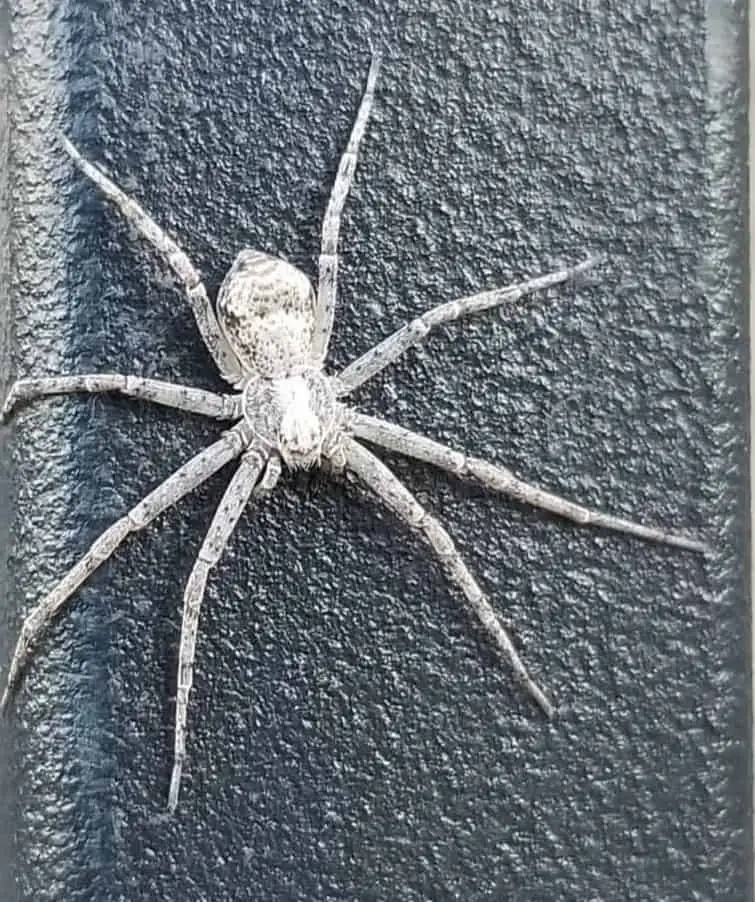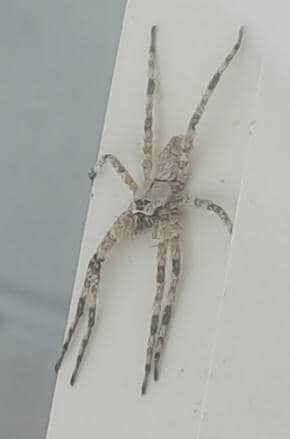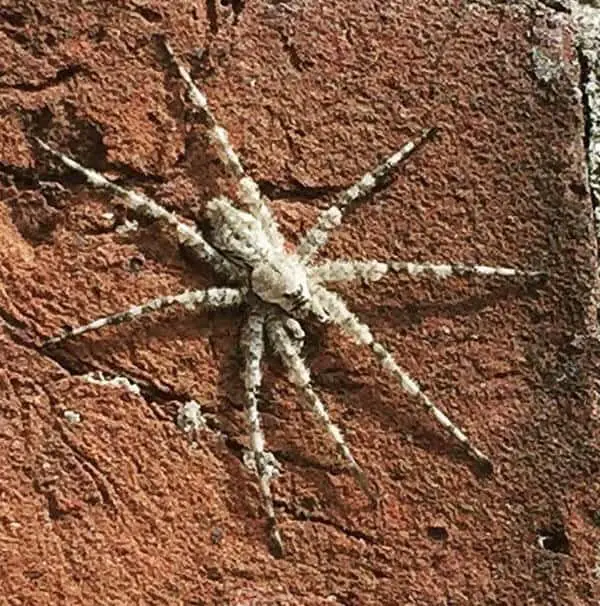Fishing Spiders belong to the family Pisauridae ( nursery web and fishing spiders ) and are closely related to Lycosidae ( wolf spiders ) and Ctenidae ( wandering spiders ), counting about 500 different species from all over the world. The famous genus, Pisaura and Dolomedes, the so-called raft or fishing spiders, are very similar in morphology and habits to the bigger Ancylometes which are part of the Ctenidae family.
Pisauridae usually have longer legs, slightly different carapace and abdomen. These spiders resemble the wolf spiders (Lycosidae), but have a different eye pattern. Pisaurids have their eyes arranged in 2 rows, the posterior row slightly recurved, the median eyes in the second row slightly (if any) larger than the others. (Wolf spiders have eyes arranged in 3 rows). The egg sac is carried by the female under her prosoma, held there by her chelicerae & pedipalps. Before the eggs hatch, the female attaches the sac to a plant and then builds a web around it — and stands guard nearby.
The Pisaurids forage for their food and build webs only for protecting their young. Some spiders in this family, particularly fishing spiders in the genus Dolomedes, are quite large and may have a leg spread of 75 mm or more. The Dolomedes spiders live near water; they walk on the surface of water and dive underneath it to feed on aquatic insects and even small fish. Many people (including me), are confused by the 5 similar looking spiders – the harmless Huntsman, Wolf Spider, Southern House Spider (Kukulcania), Fishing Spider and Brown Recluse which of course is not harmless. All photos are copyright to their owners and may not be reproduced without permission.
Photos below are of Dolomedes tenebrosus, Dolomedes triton, Giant Raft Spiders (Dolomedes plantarius), Raft Spiders (Dolomedes fimbriatus) and White Banded Fishing Spiders (Dolomedes albineus).
Table of Contents
Dolomedes tenebrosus
The largest dolomedes and most commonly found fishing spider is Dolomedes tenebrosus , which has a leg span of 3″. It is commonly found on the trunks of trees that are near water.
Dolomedes Triton
The Six-Spotted Fishing Spider (Dolomedes triton), is slightly smaller than D. tenebrosus, but it is nevertheless a very large spider. It is often seen hunting on the water’s surface in ponds and slow-moving streams.
Raft Spider (Dolomedes Fimbriatus) and Great Raft Spider (Dolomedes Plantarius)
The raft spider, (Dolomedes fimbriatus), is a European spider of the family Pisauridae. The raft spider is one of the two largest spiders in the United Kingdom. Like other Dolomedes spiders it hunts by running on the surface of water, and can submerge altogether to hide from predators. The female’s body measures up to 22 millimetres (0.87 in) long with a leg span of about 70 mm (2.8 in); as with most spiders the male is considerably smaller. Raft spiders are semi-aquatic and live around acidic bogs and in wet acidic grassland, especially where there are small pools of water. They are dark chocolate brown in colour (or sometimes greenish) with a conspicuous white or cream stripe along each side. The closely related great raft spider (Dolomedes plantarius) is similar in size, habits and appearance, but lives in fens.
The Great Raft spider or fen raft spider (Dolomedes plantarius) is a European species of spider in the Pisauridae family. Like other Dolomedes spiders, it is semi-aquatic, hunting its prey on the surface of water. It occurs mainly in neutral to alkaline, unpolluted water of fens and grazing marsh. It is a large species within its range.
Adult females can have bodies of slightly over 20mm in length with a span of 70mm including their legs. It is typically black or brown in colouration with white or cream stripes along the sides of the body. It is very similar in look to the closely related raft spider Dolomedes fimbriatus with which it is often misidentified. Great raft spiders are predatory and hunt from perches at the water’s edge.
The first 3 photos below at Great Raft Spiders (Dolomedes Plantarius). The remainder I think are Raft Spiders (Dolomedes Fimbriatus).
Dolomedes Albineus
The White Banded Fishing Spider is not one of the more aquatic species. It is generally found in trees.

